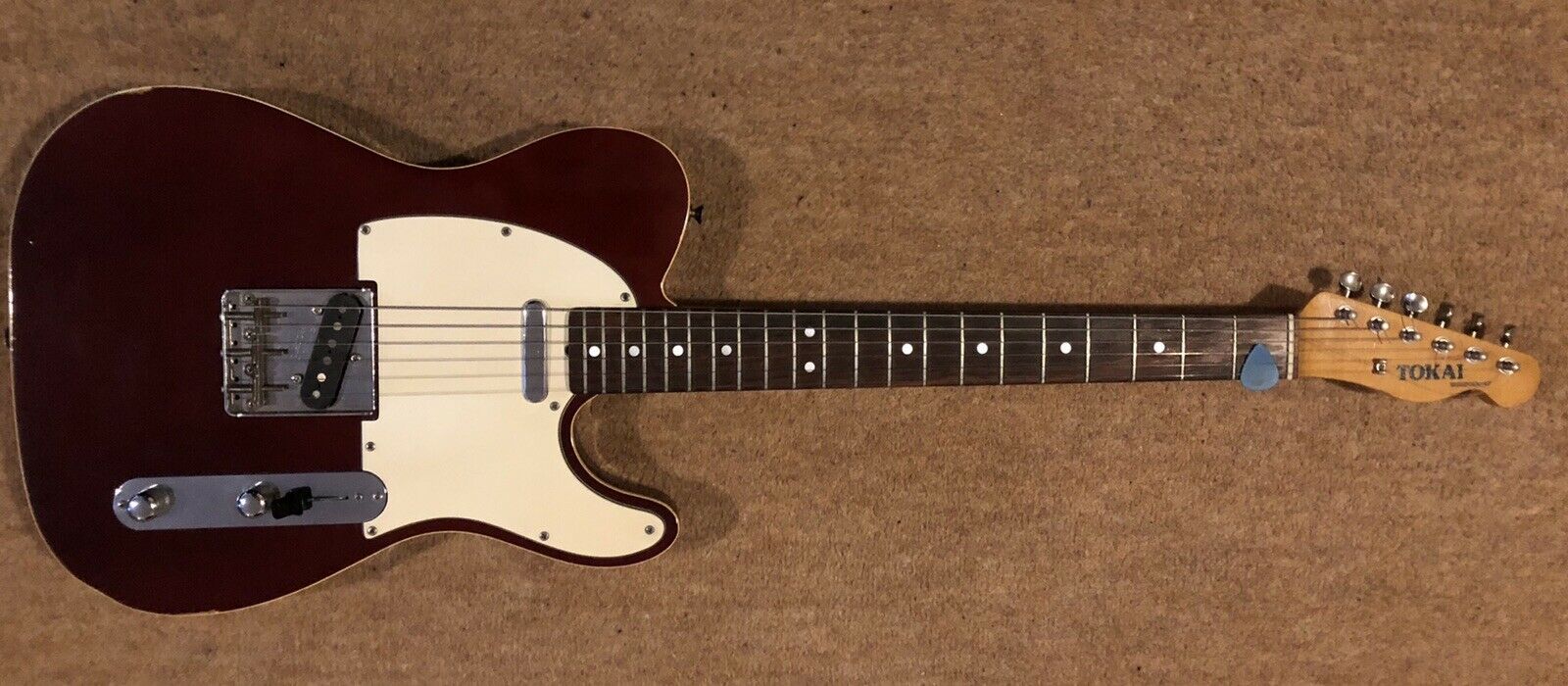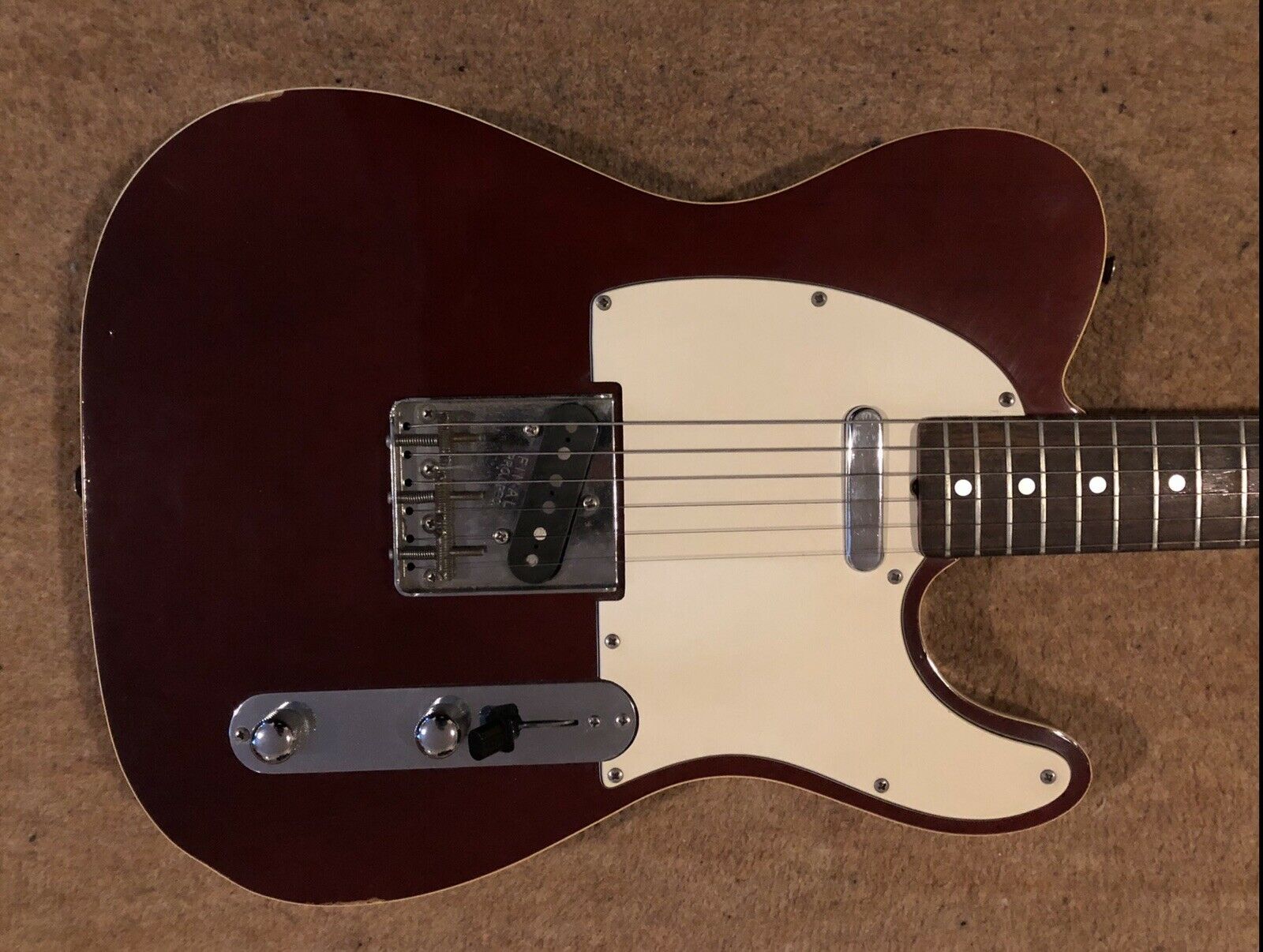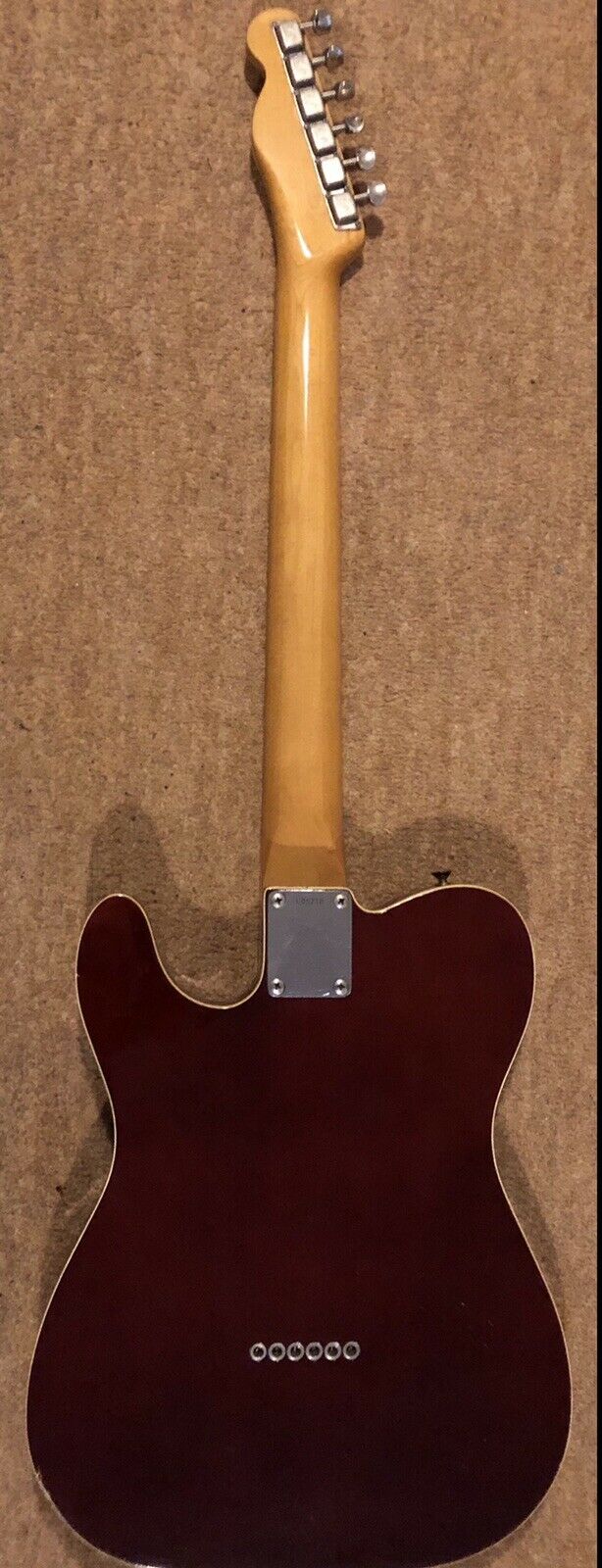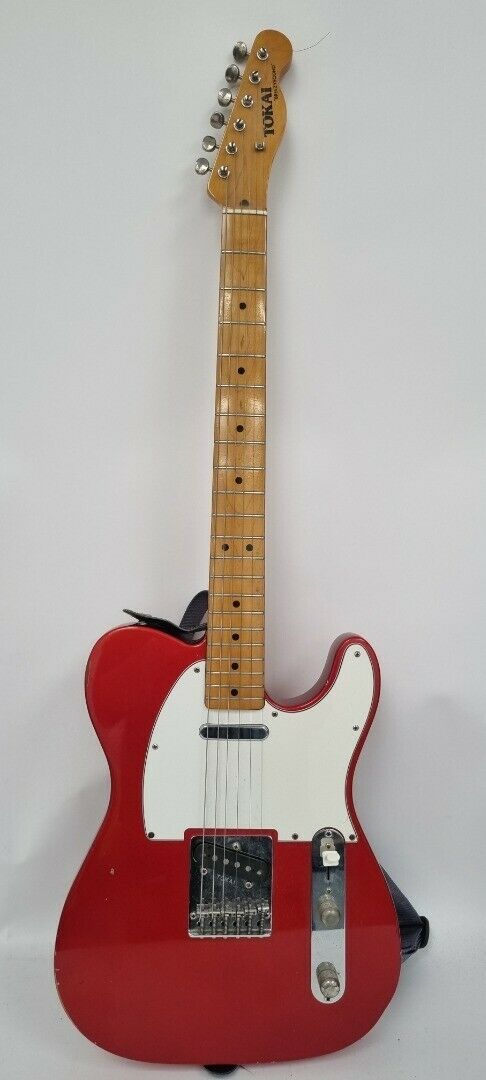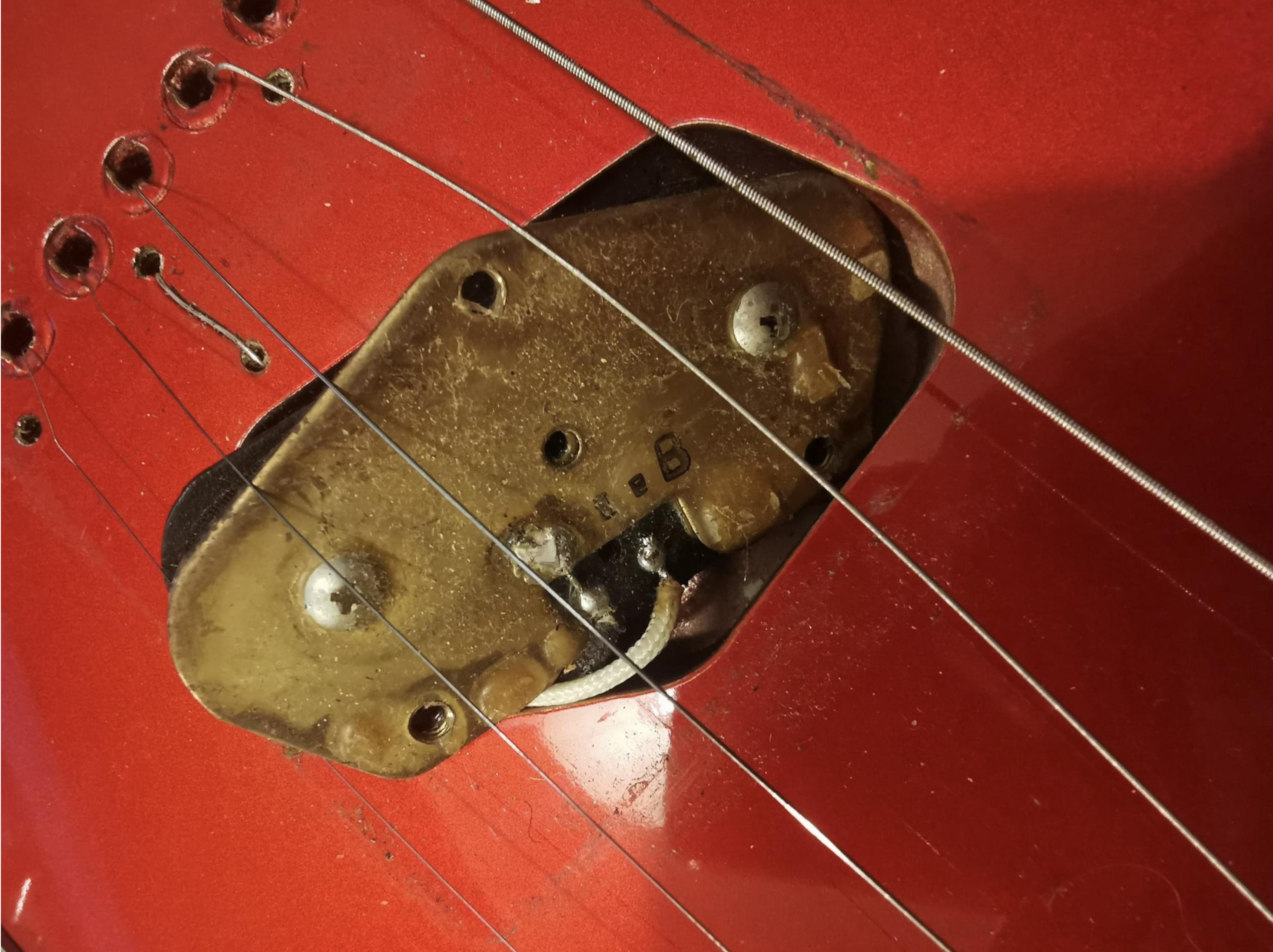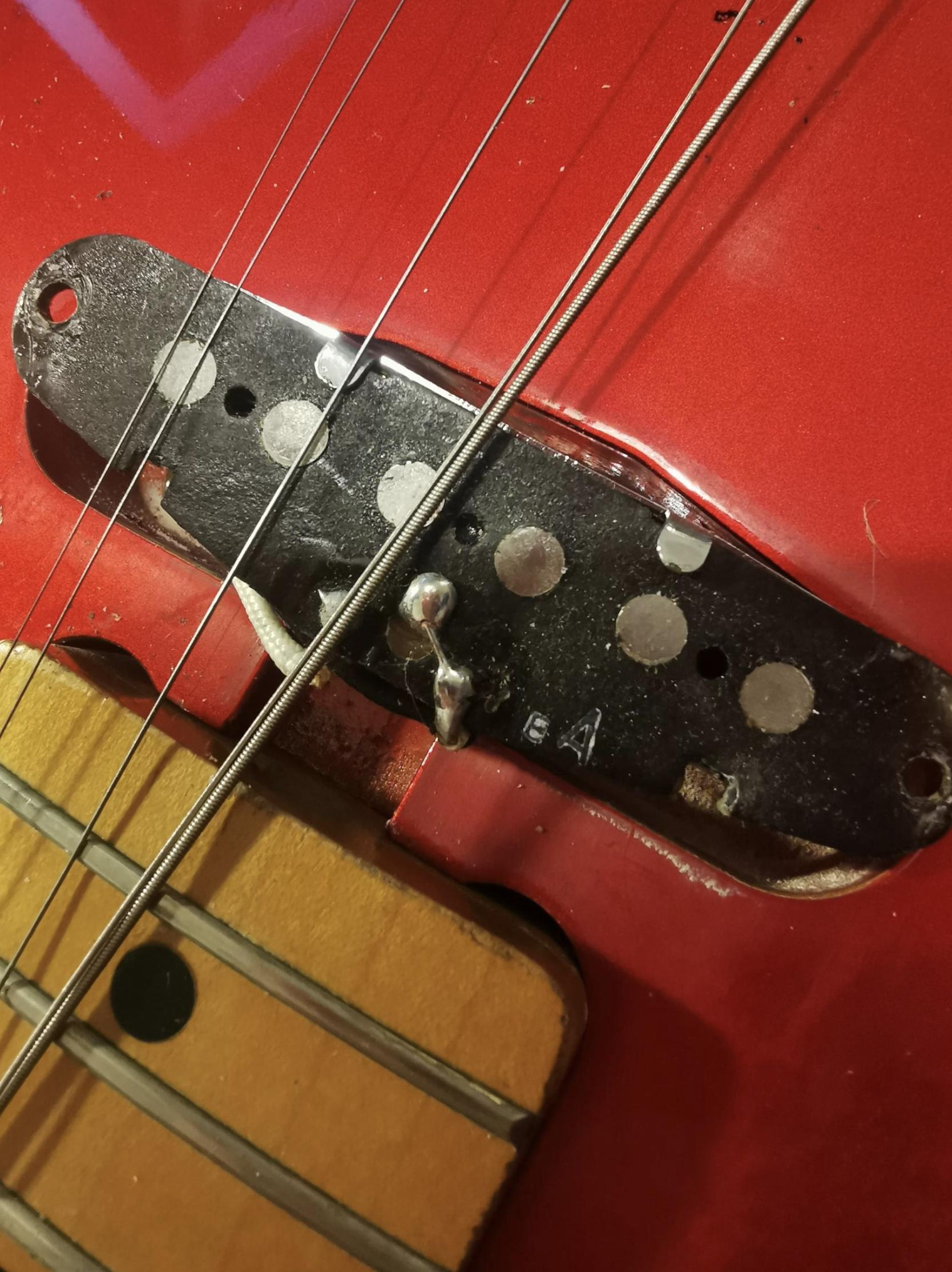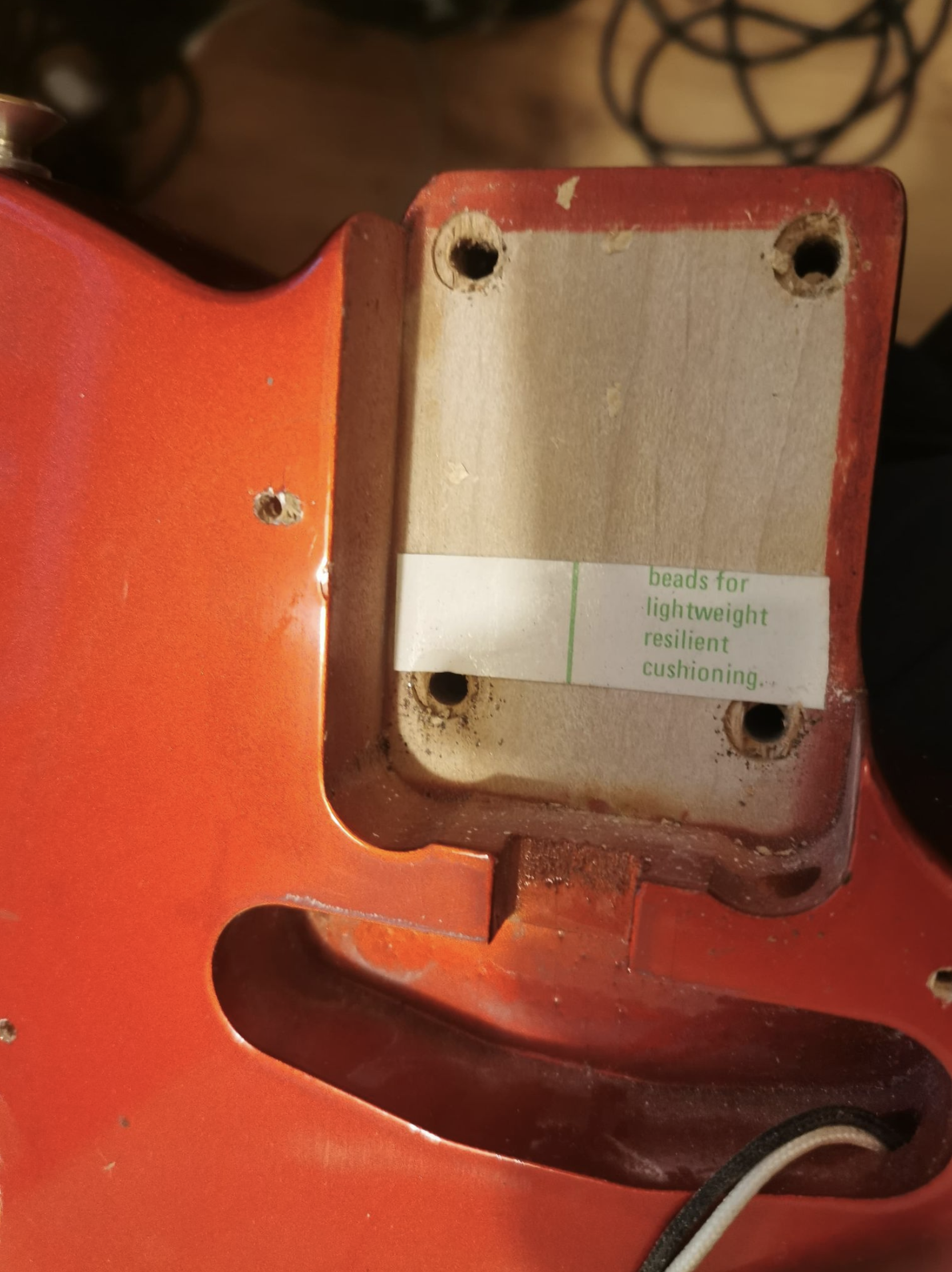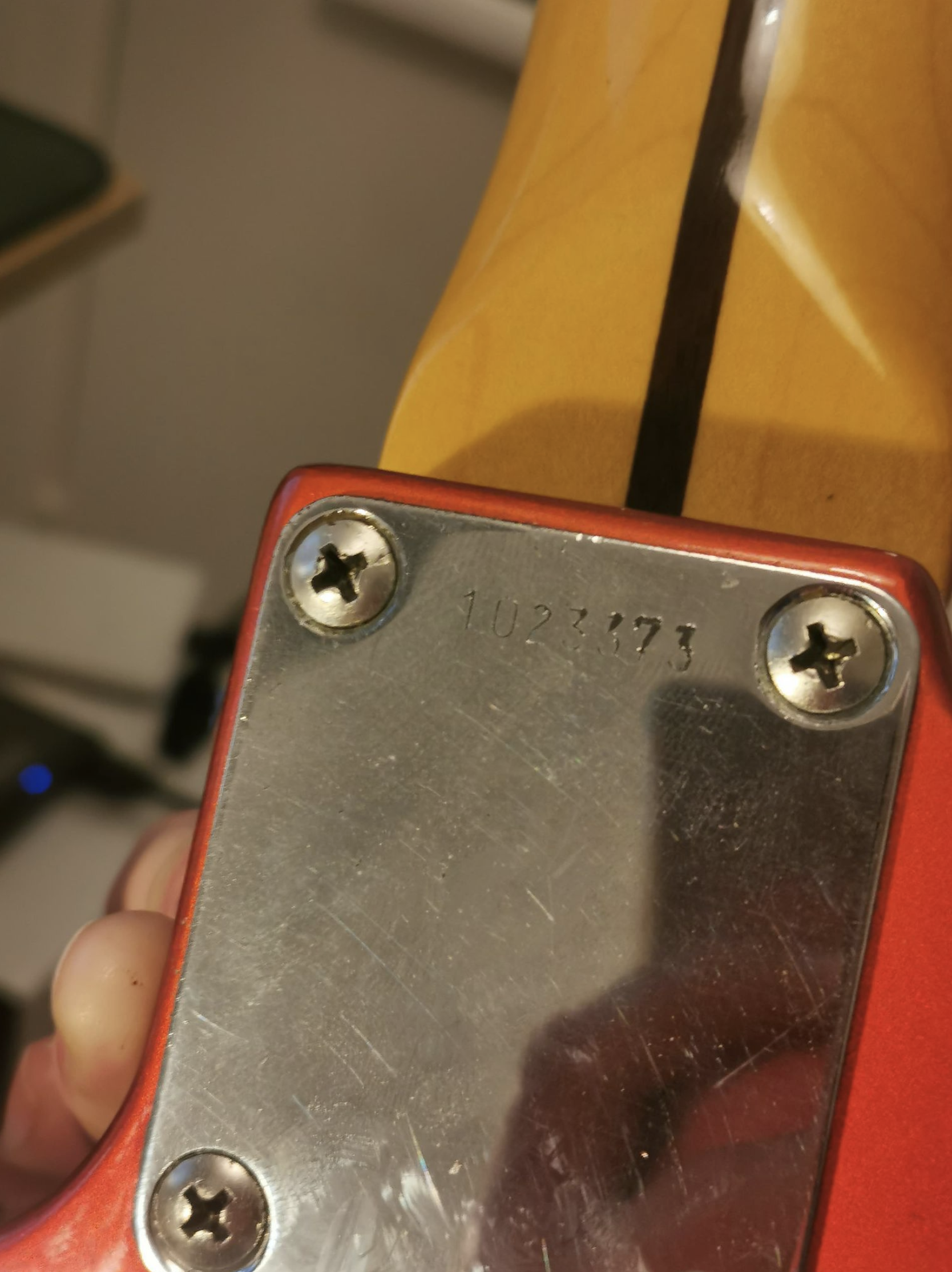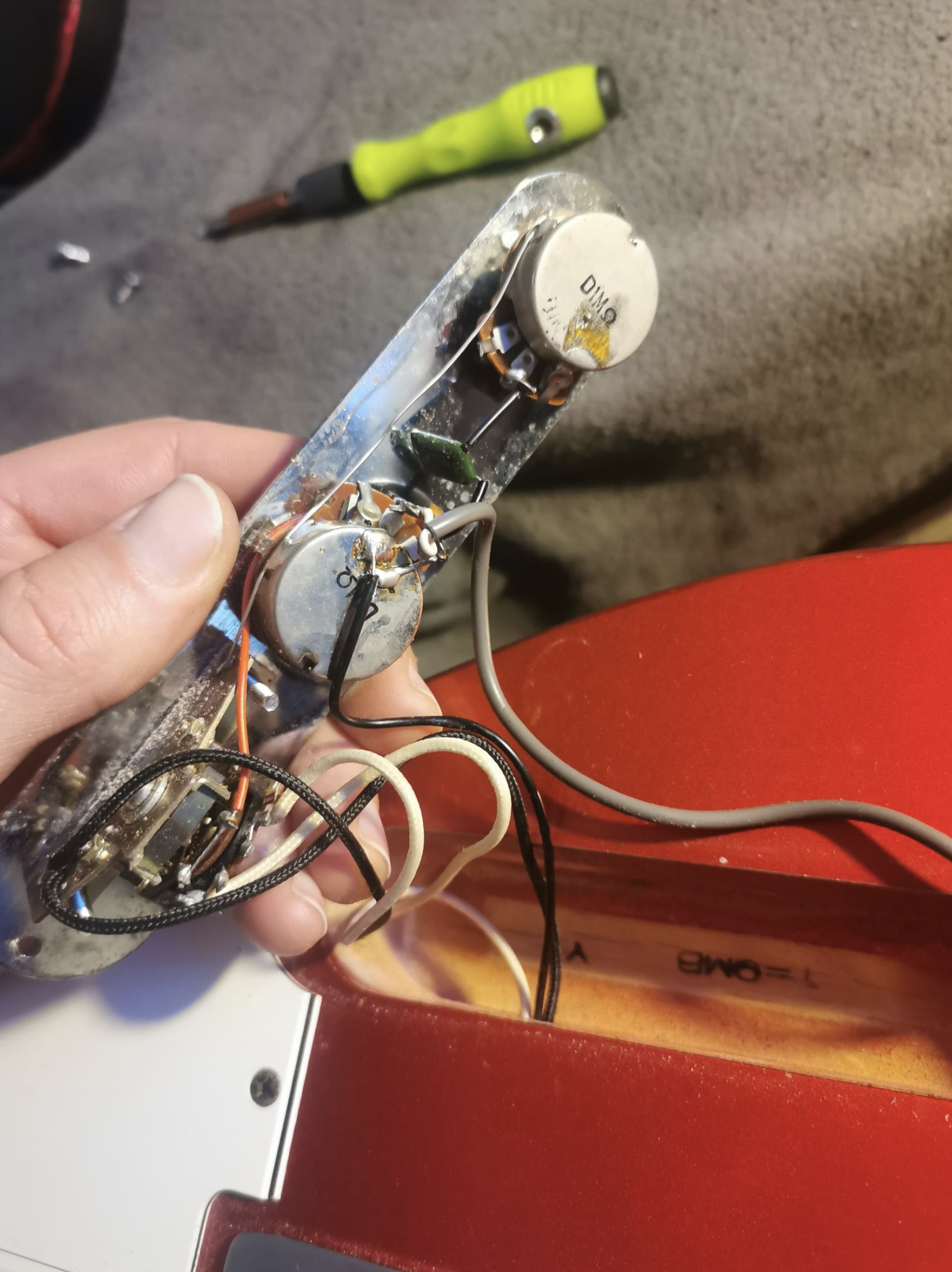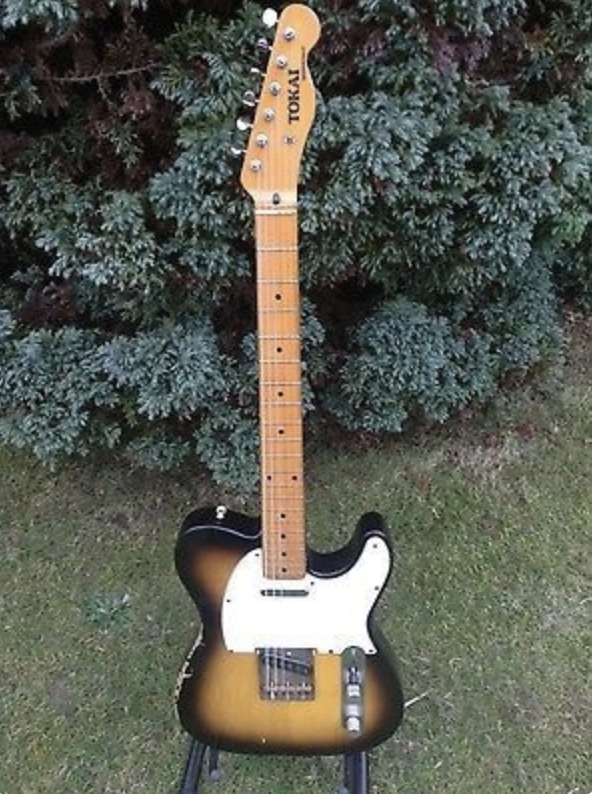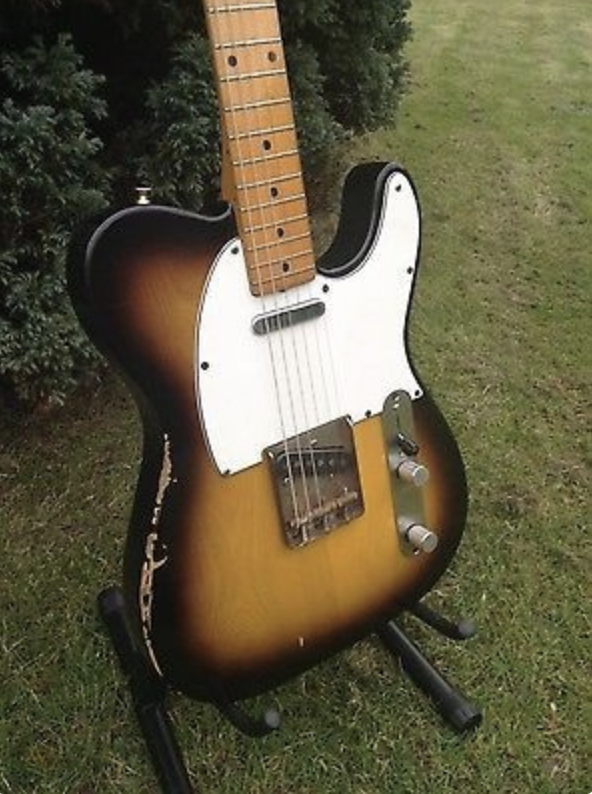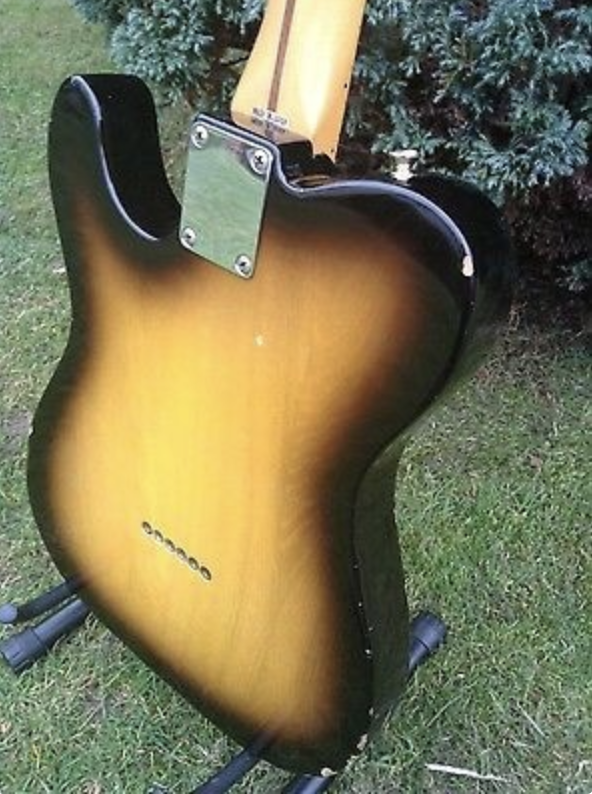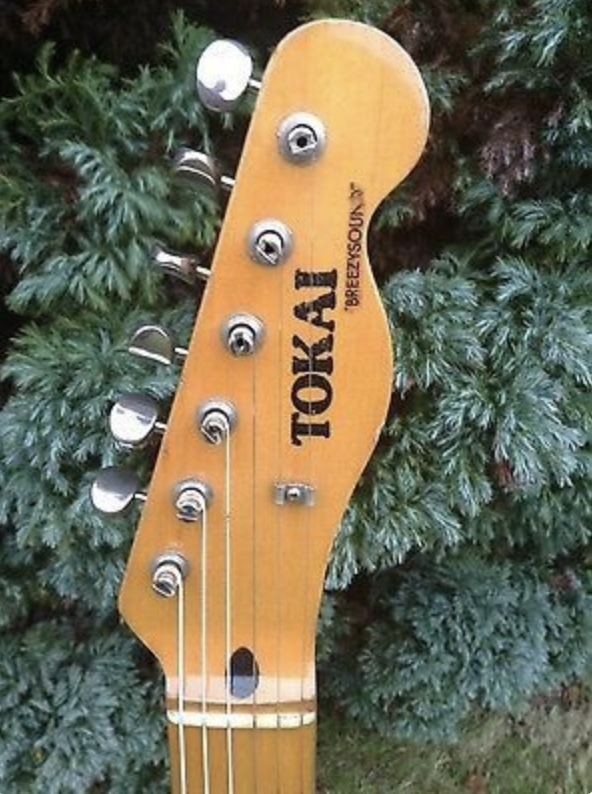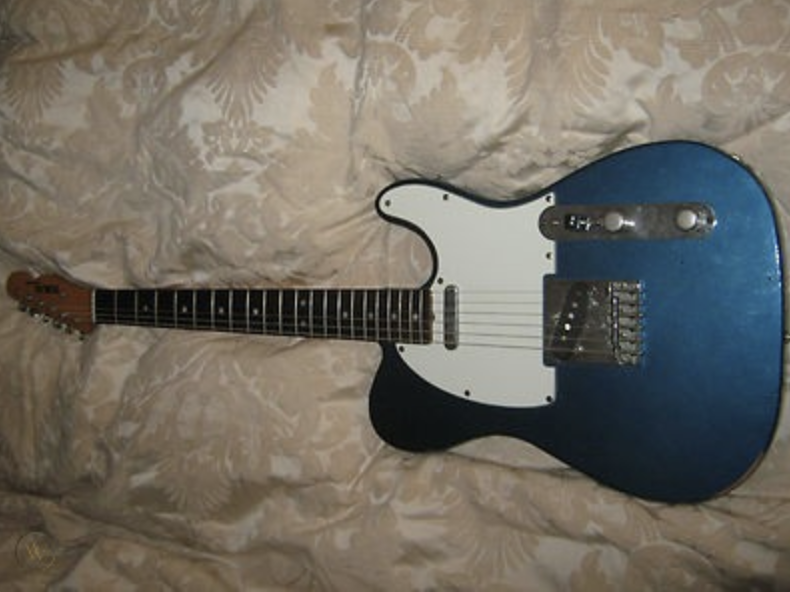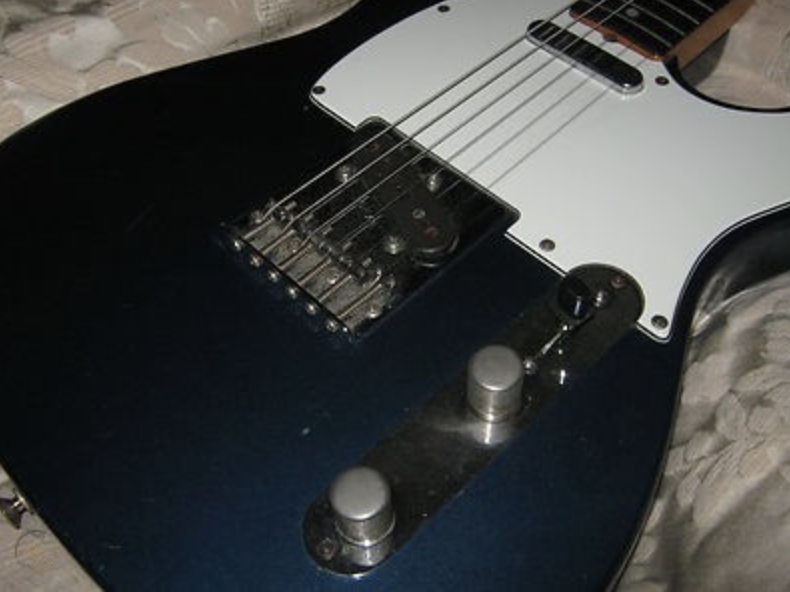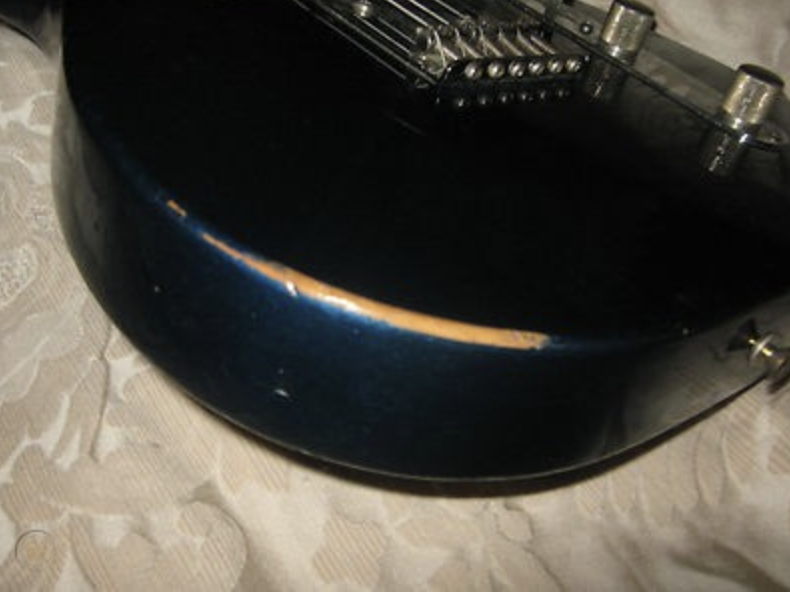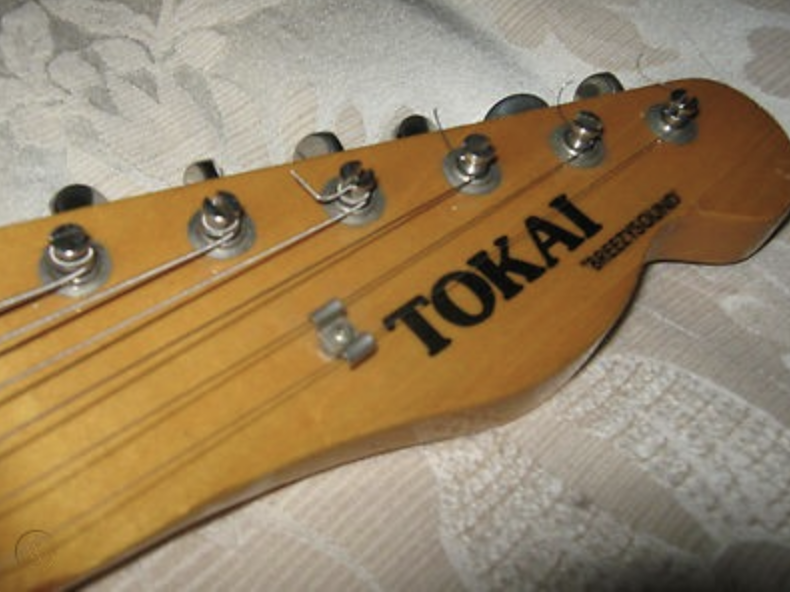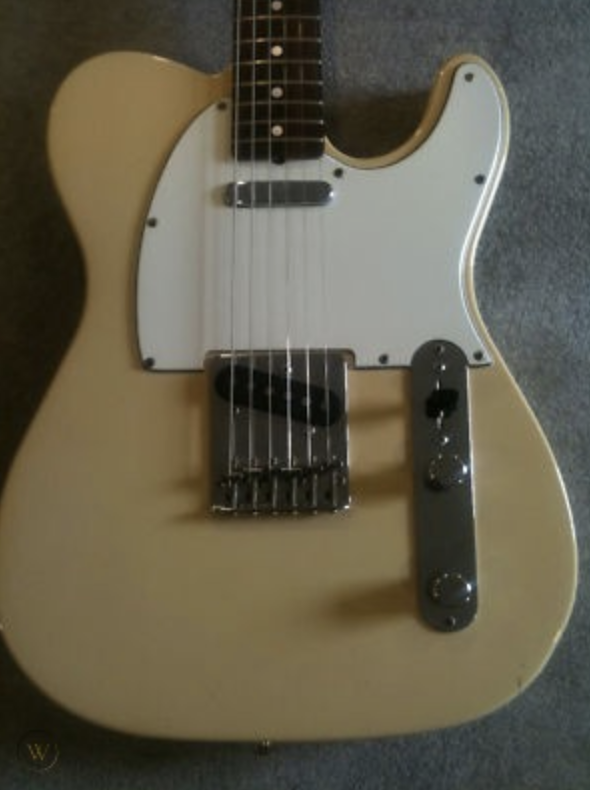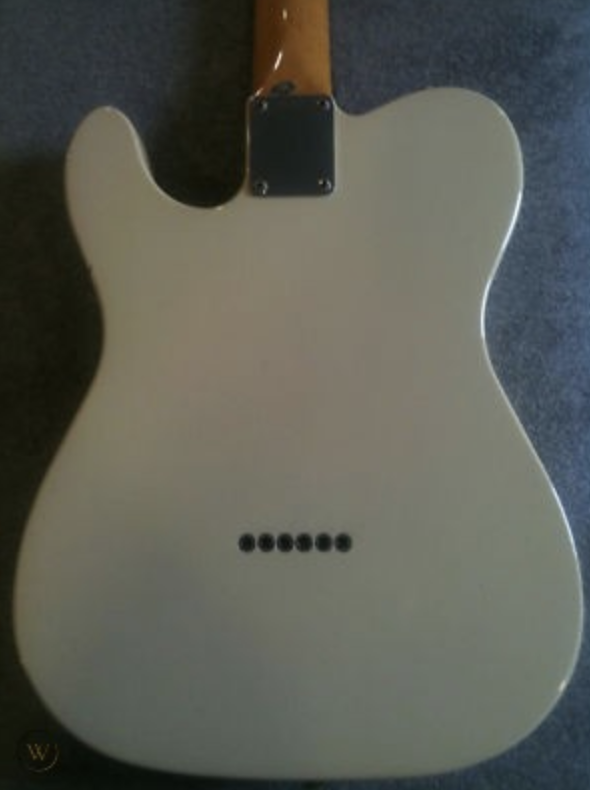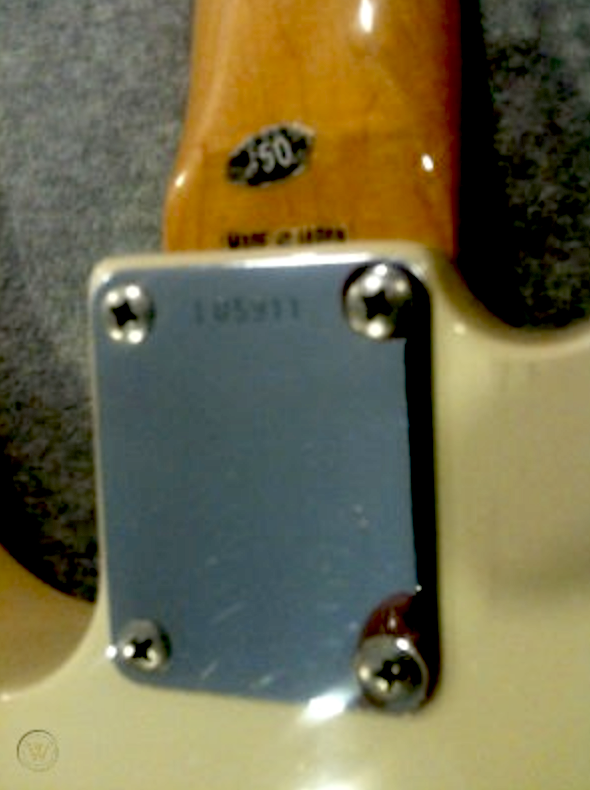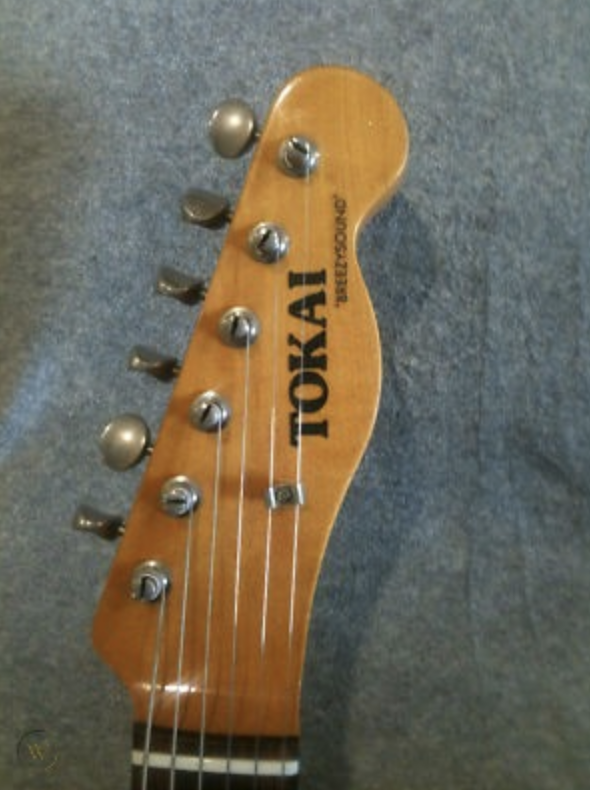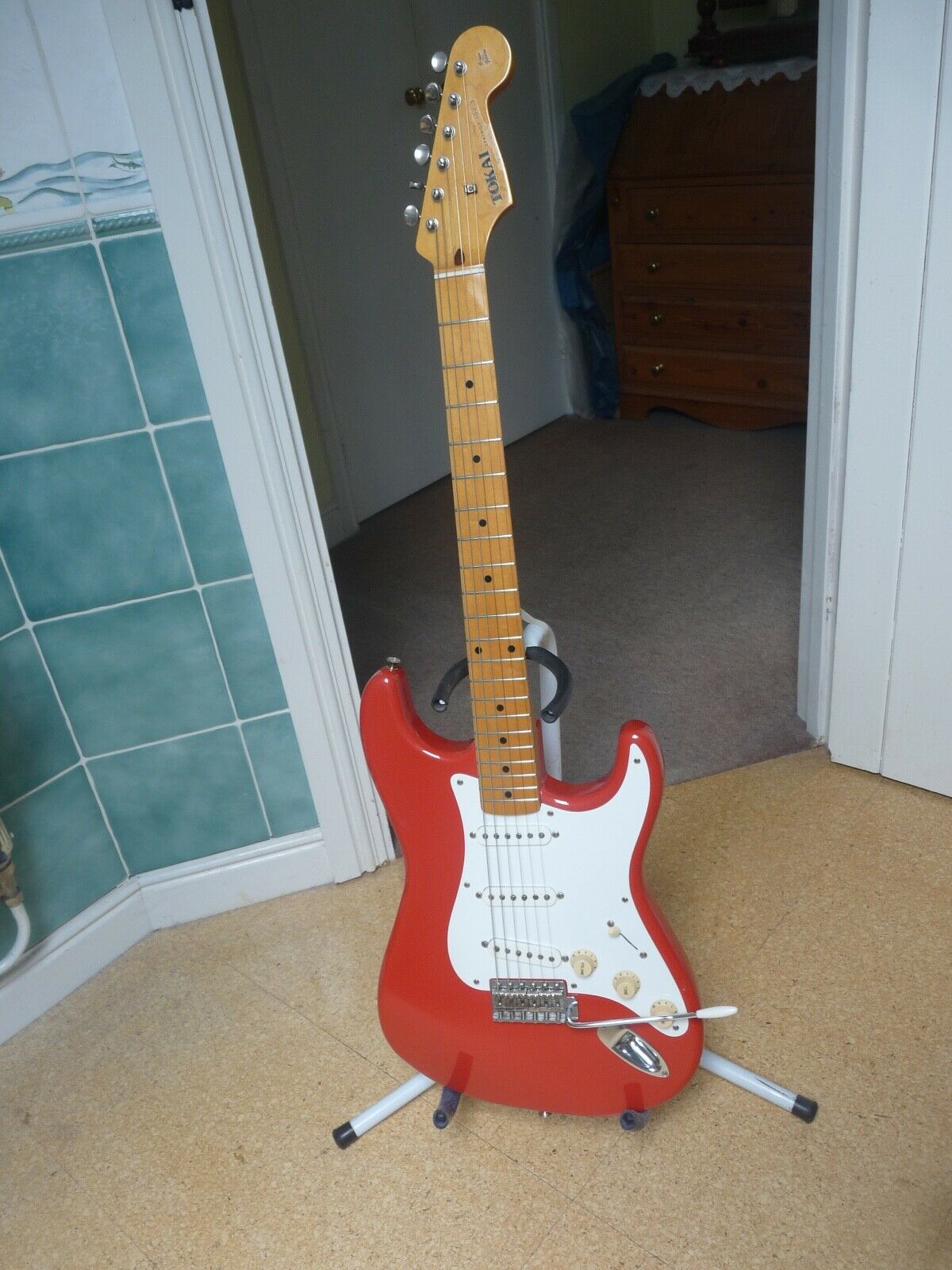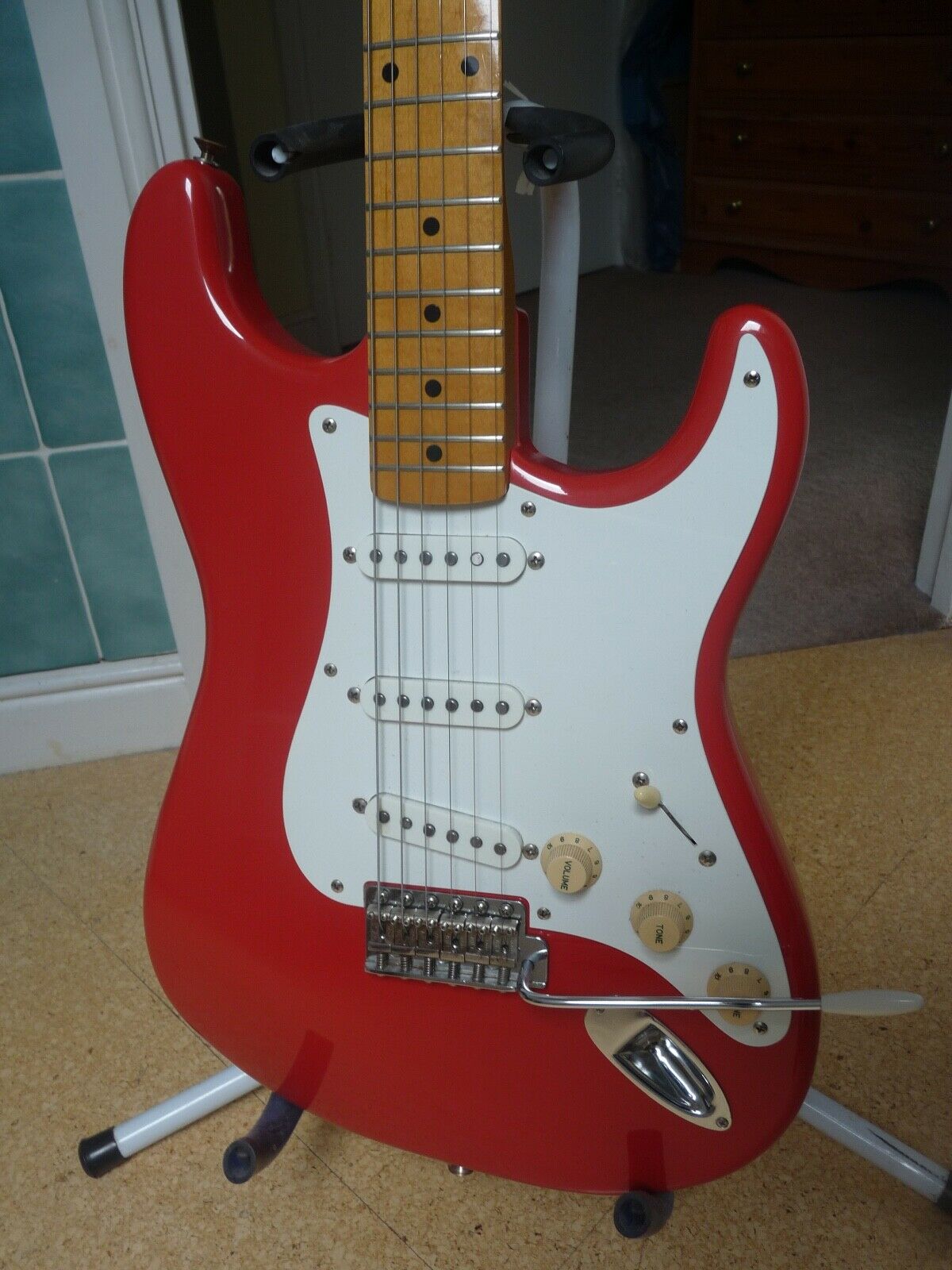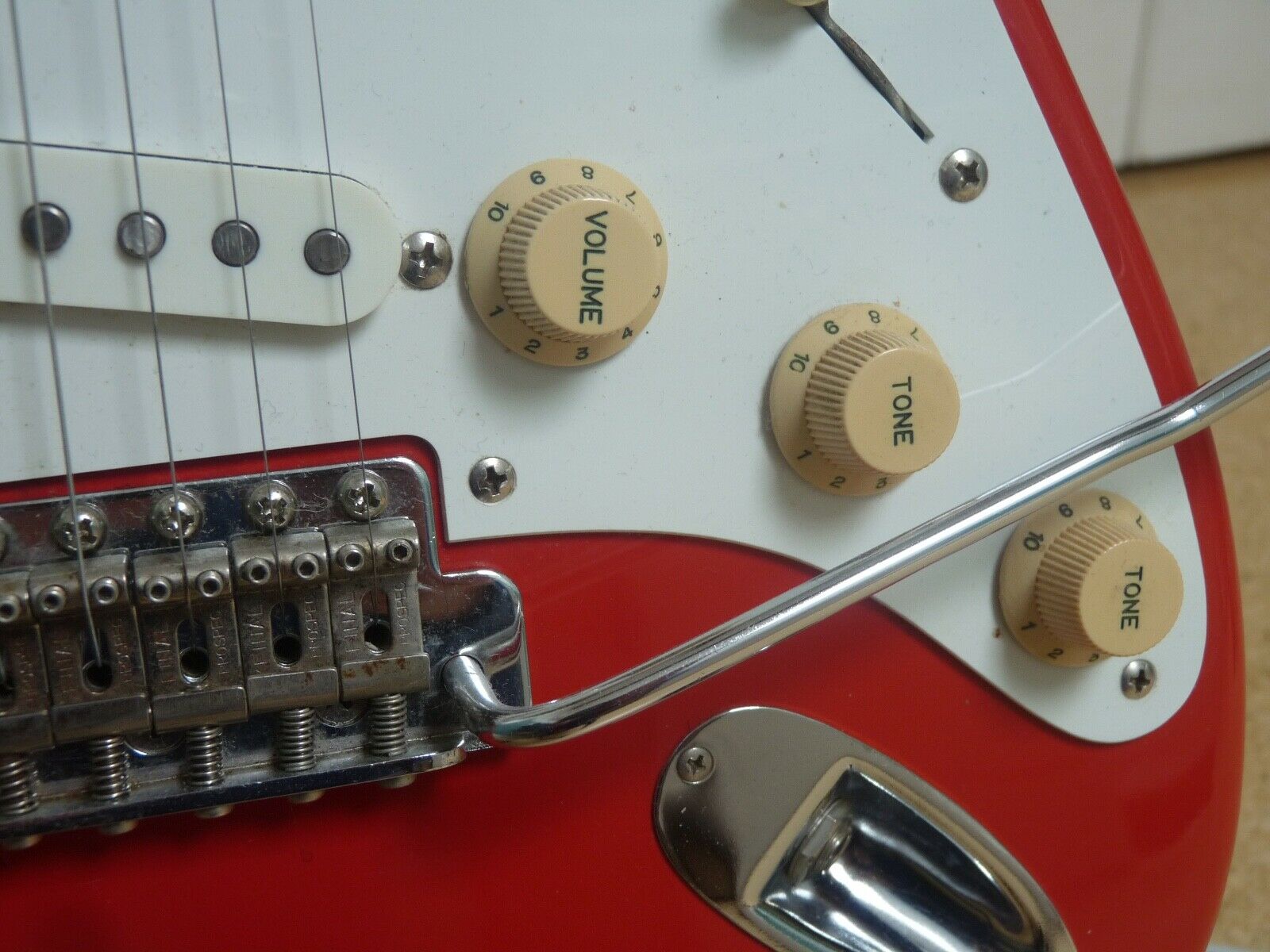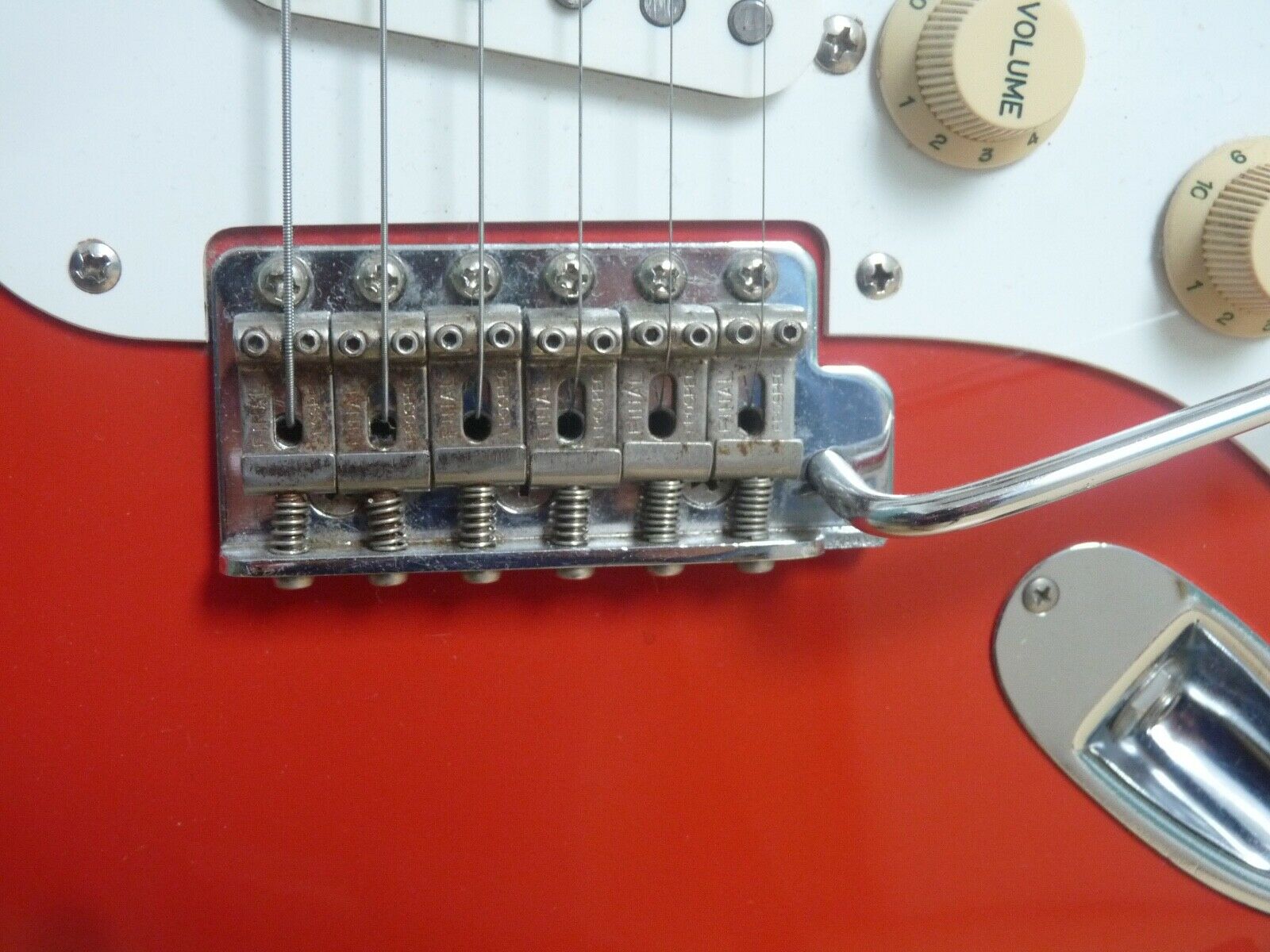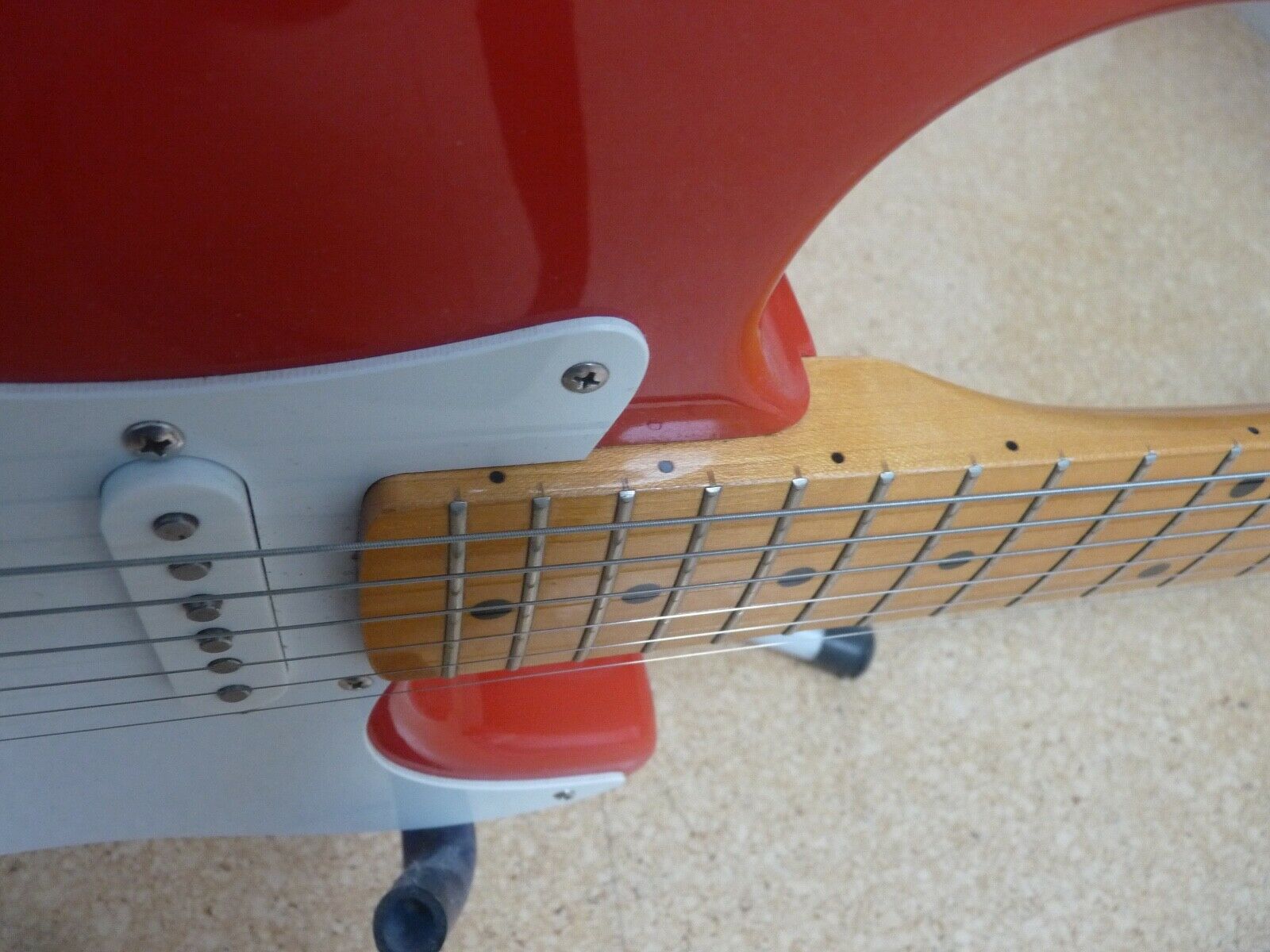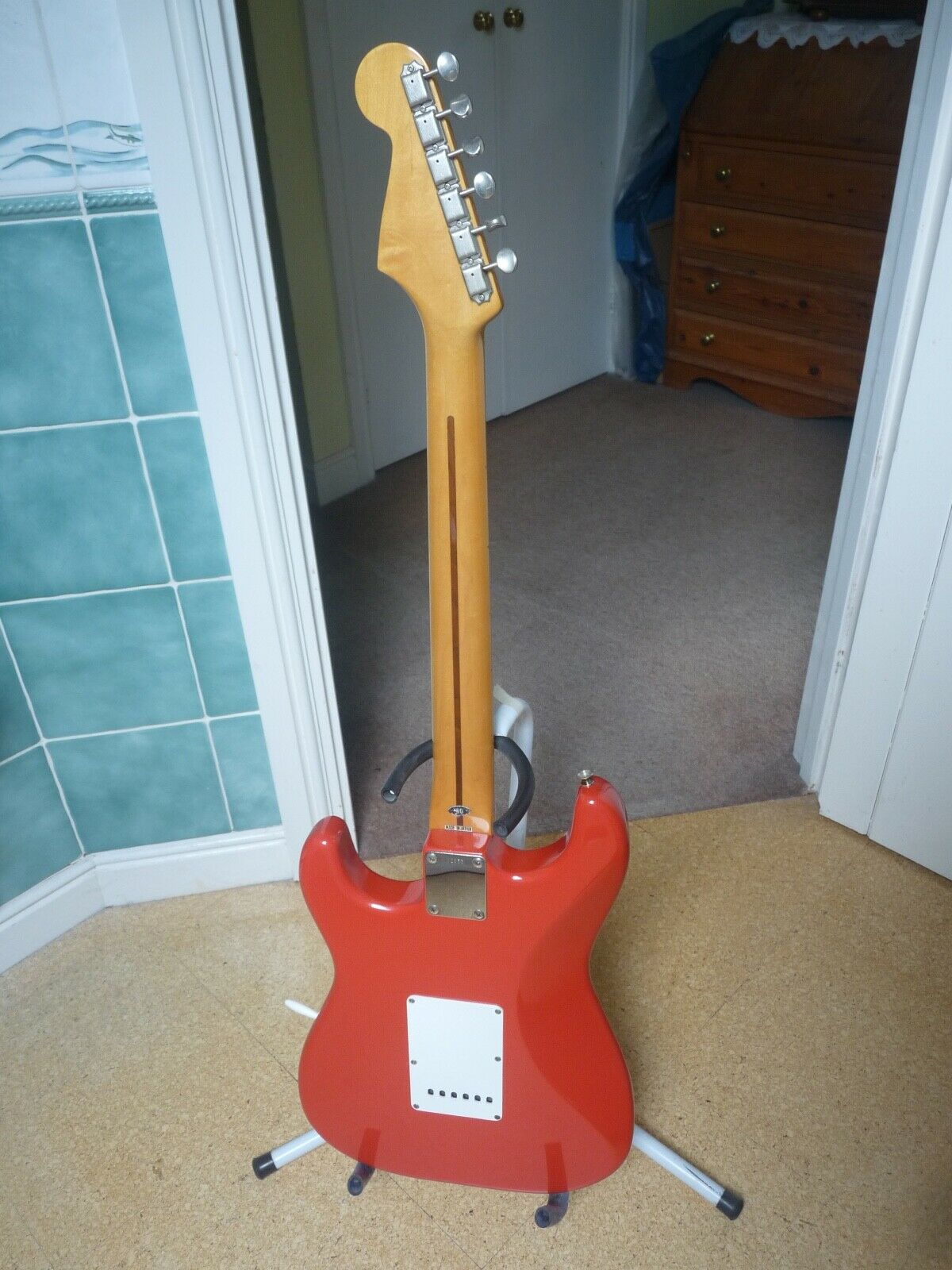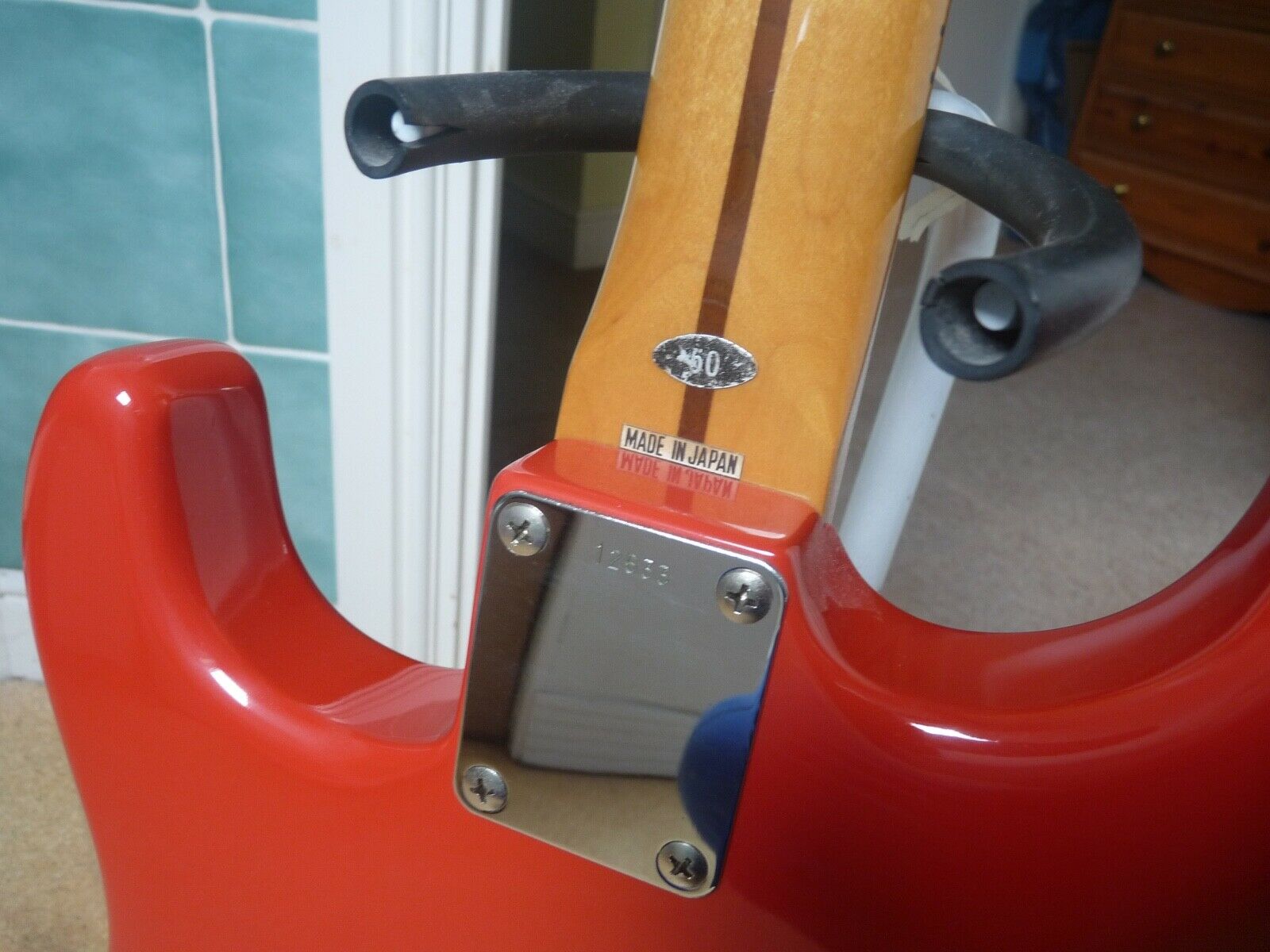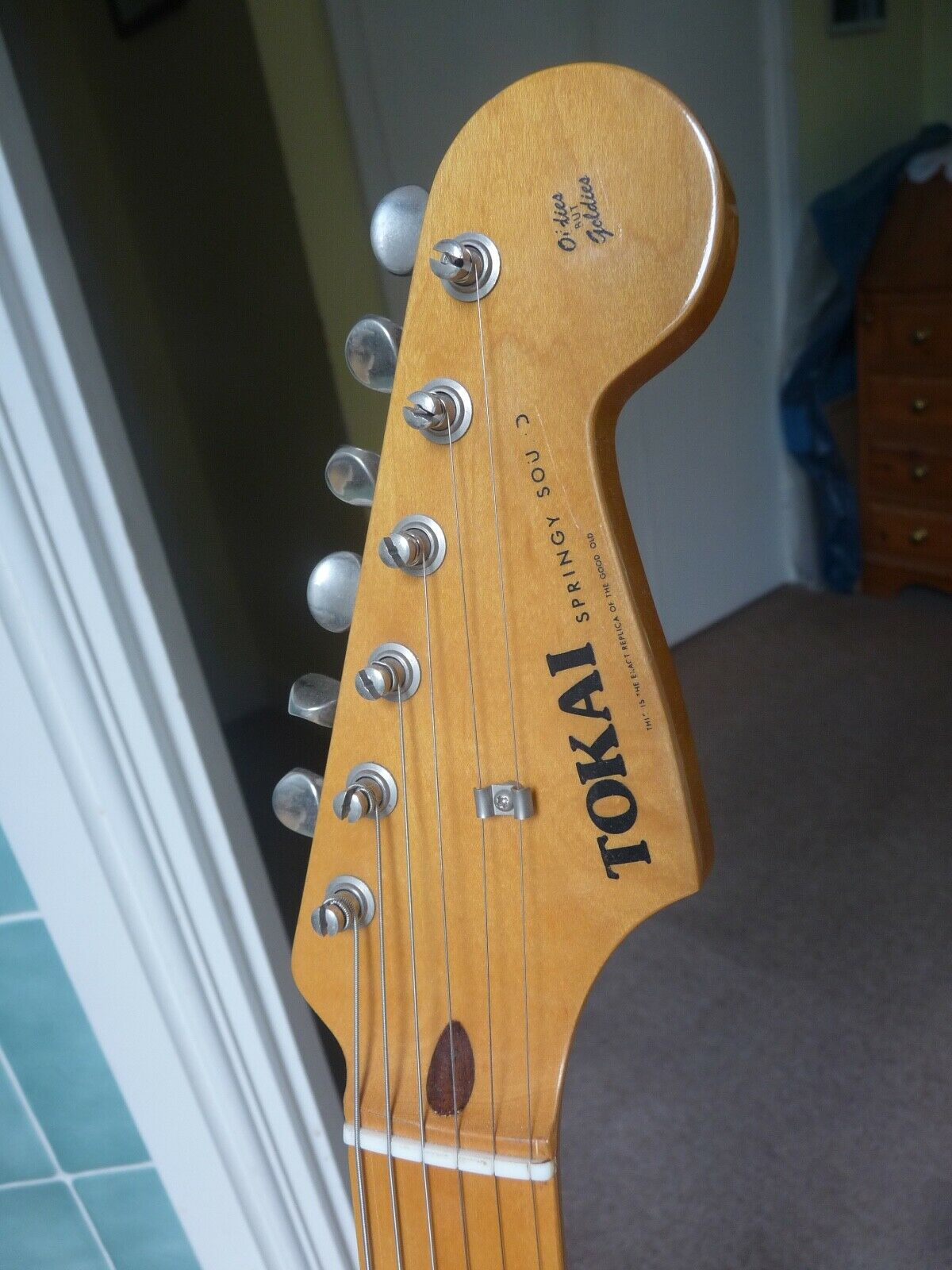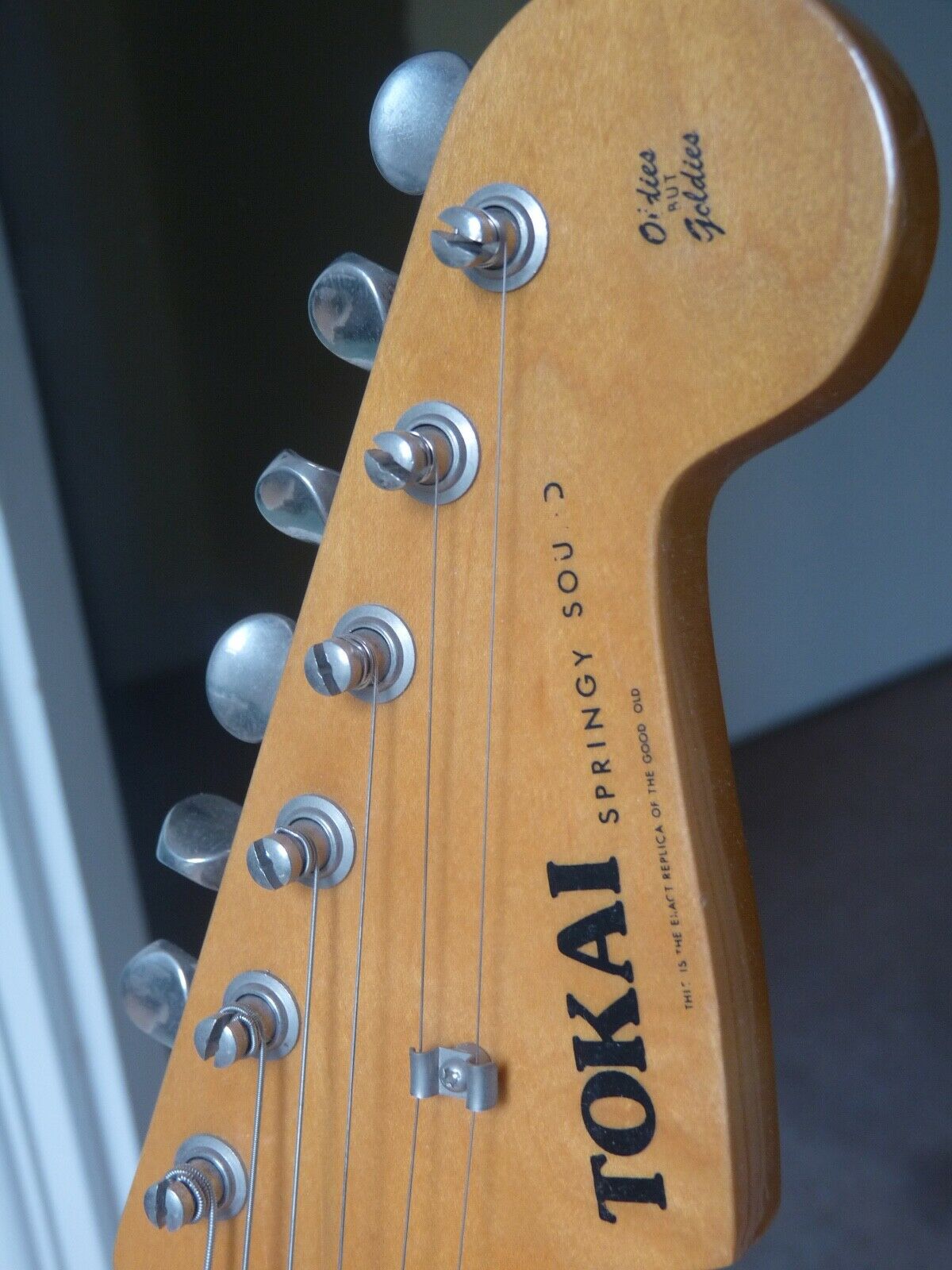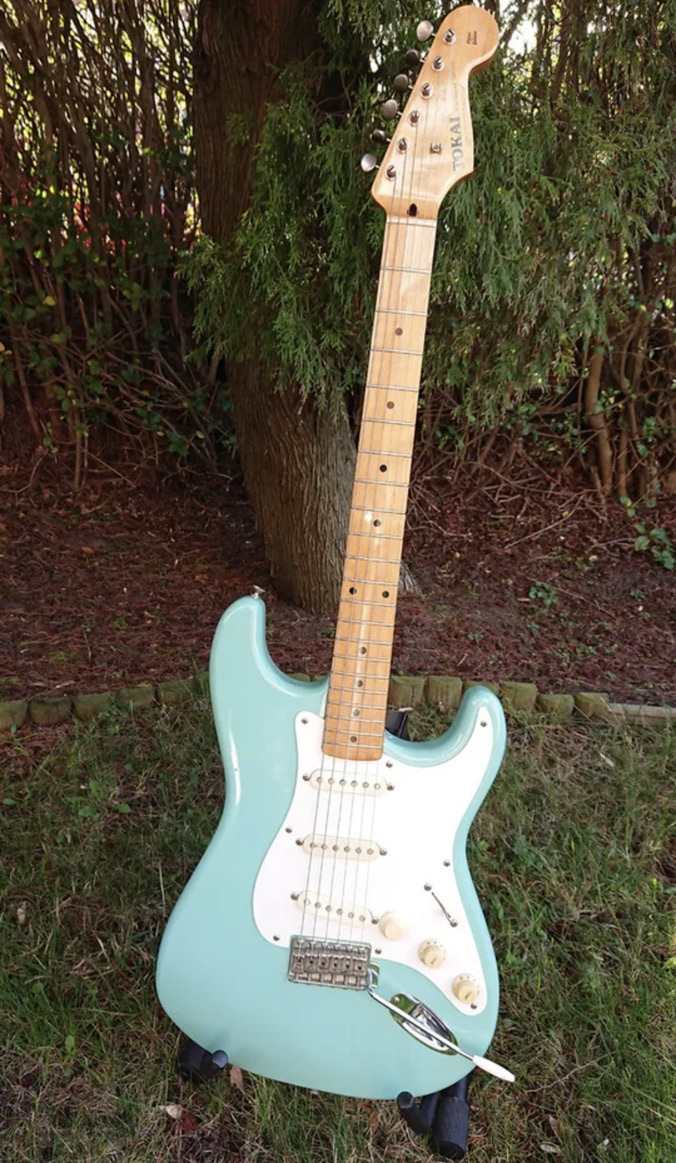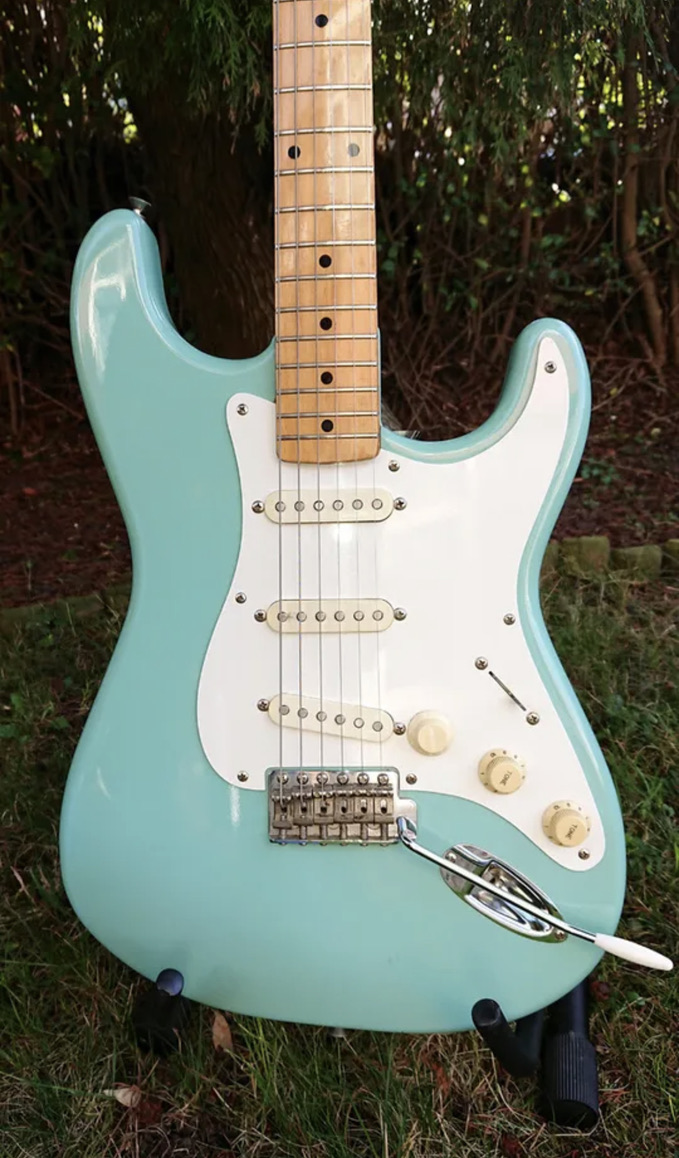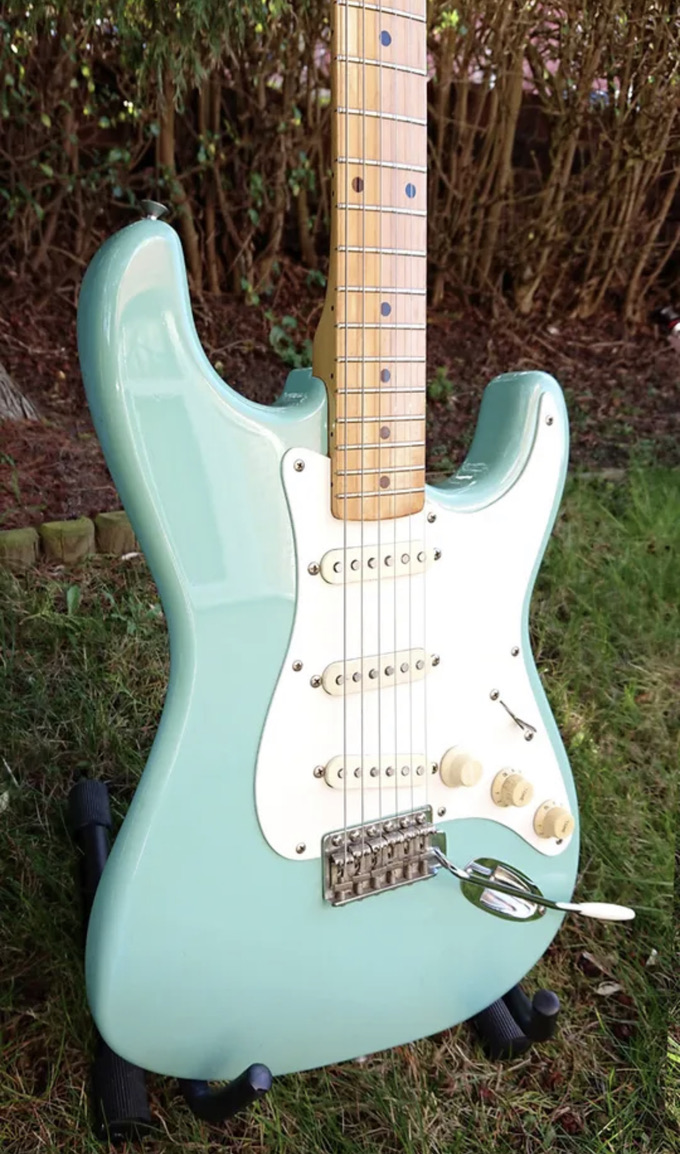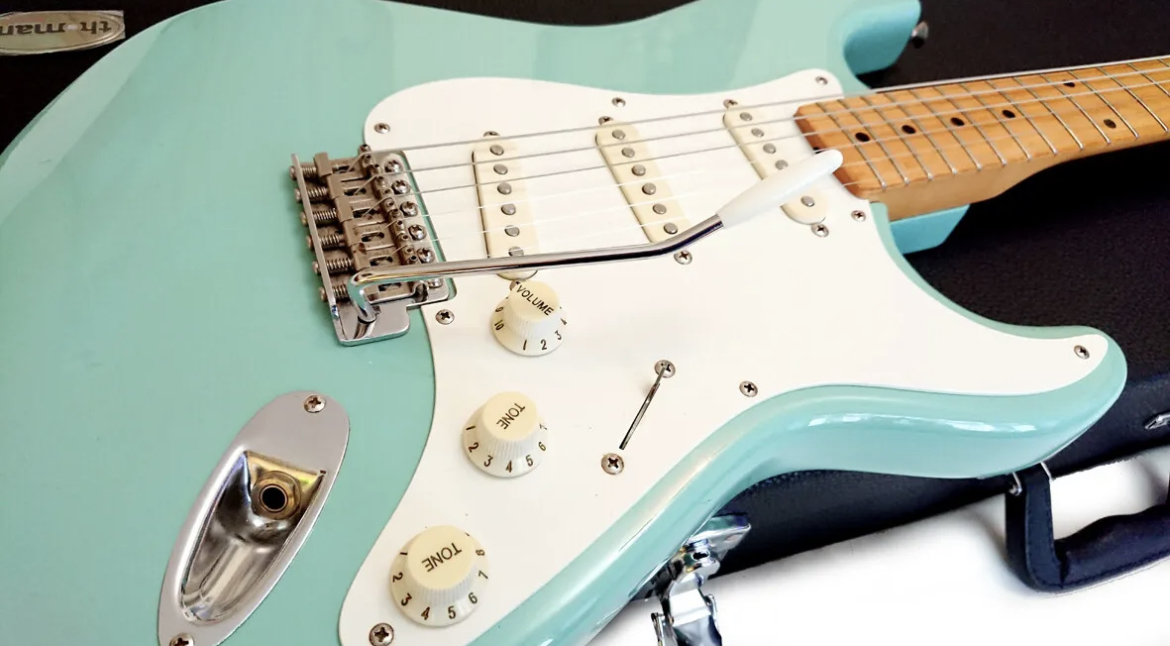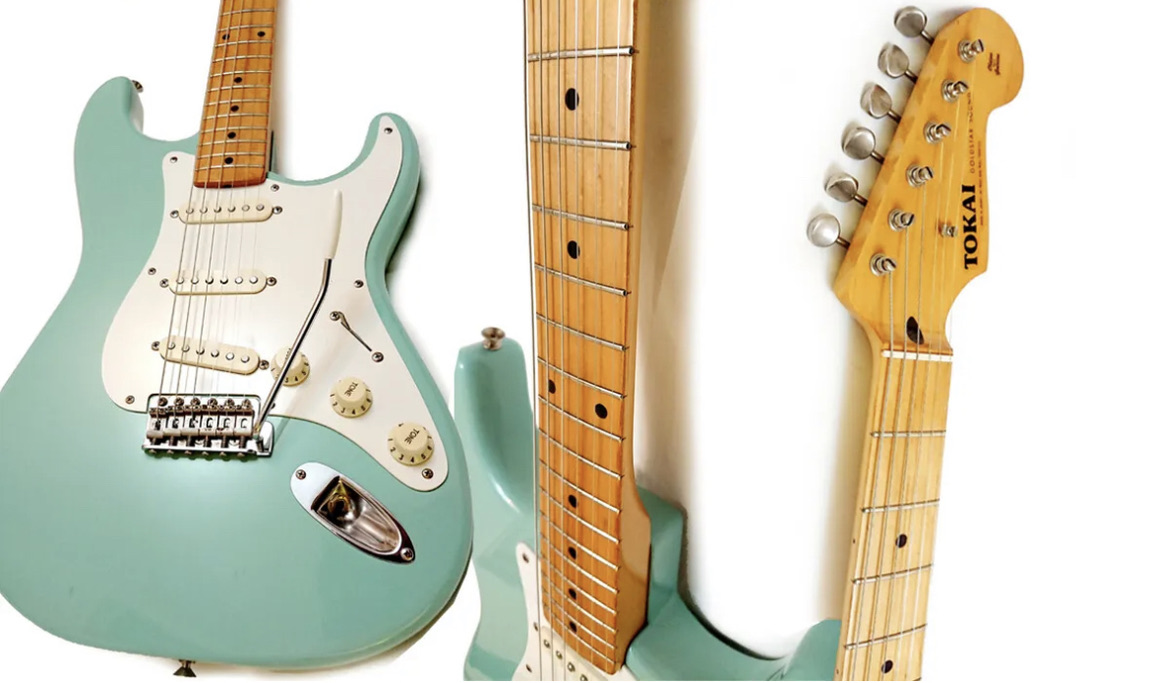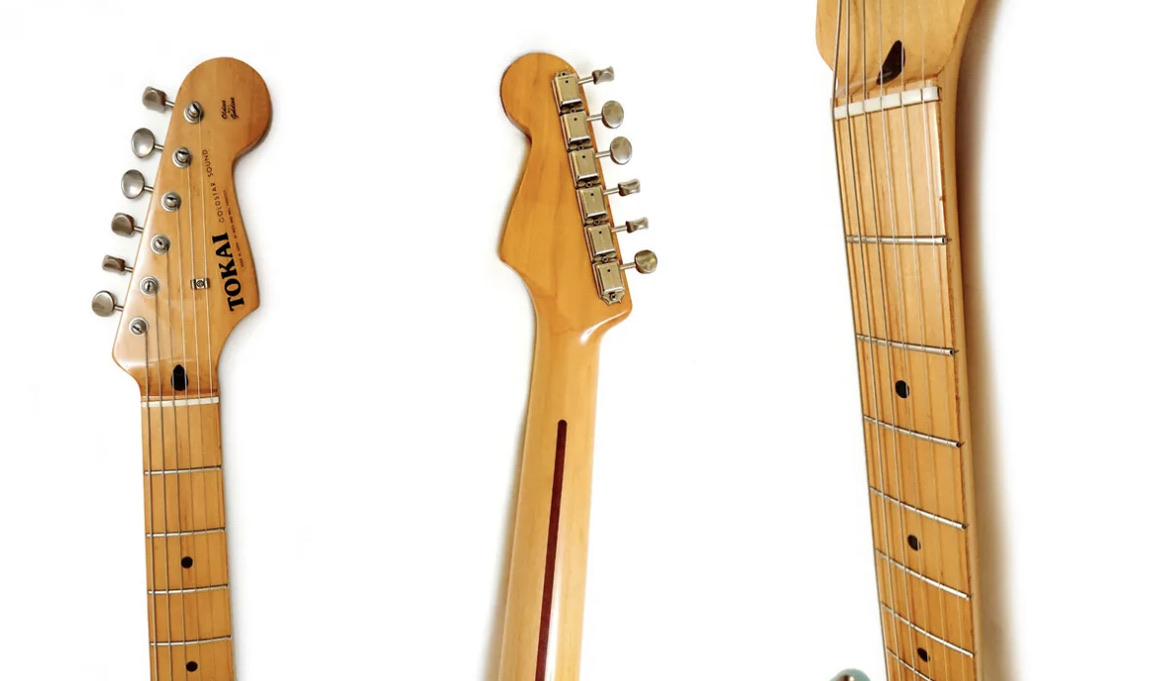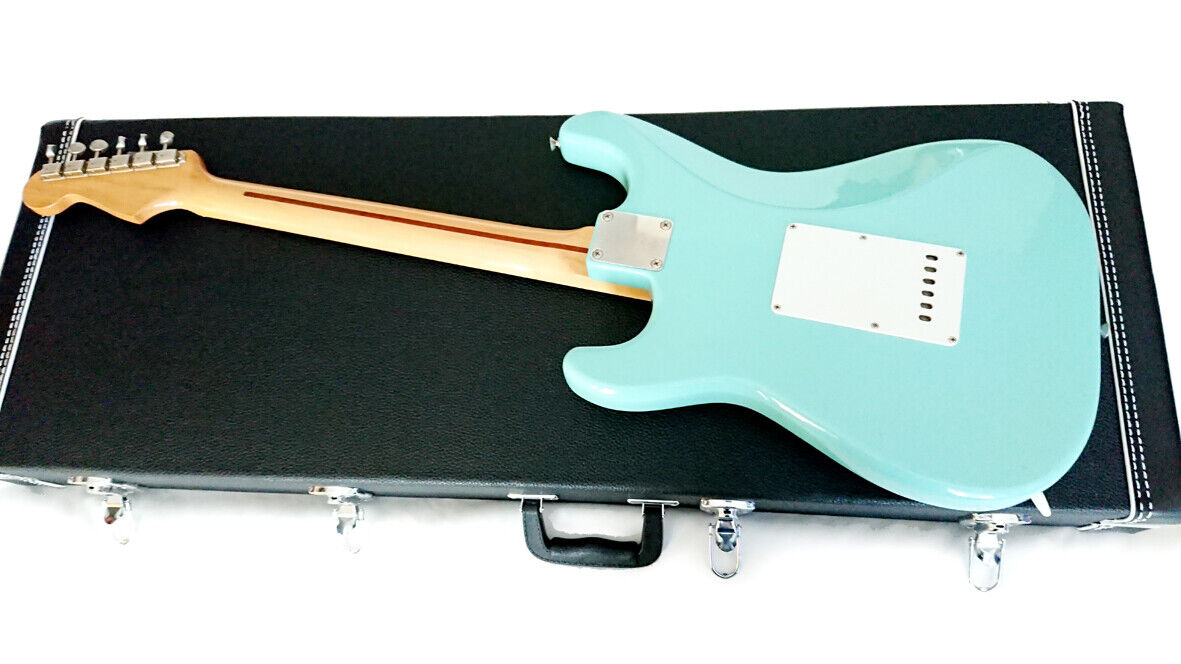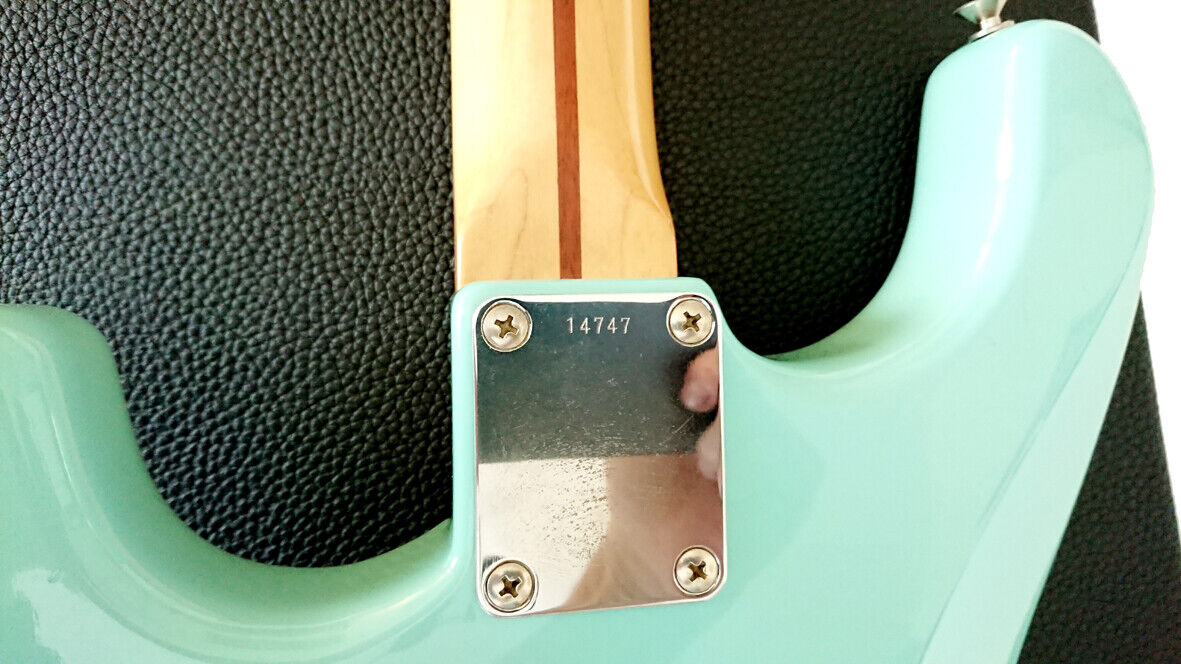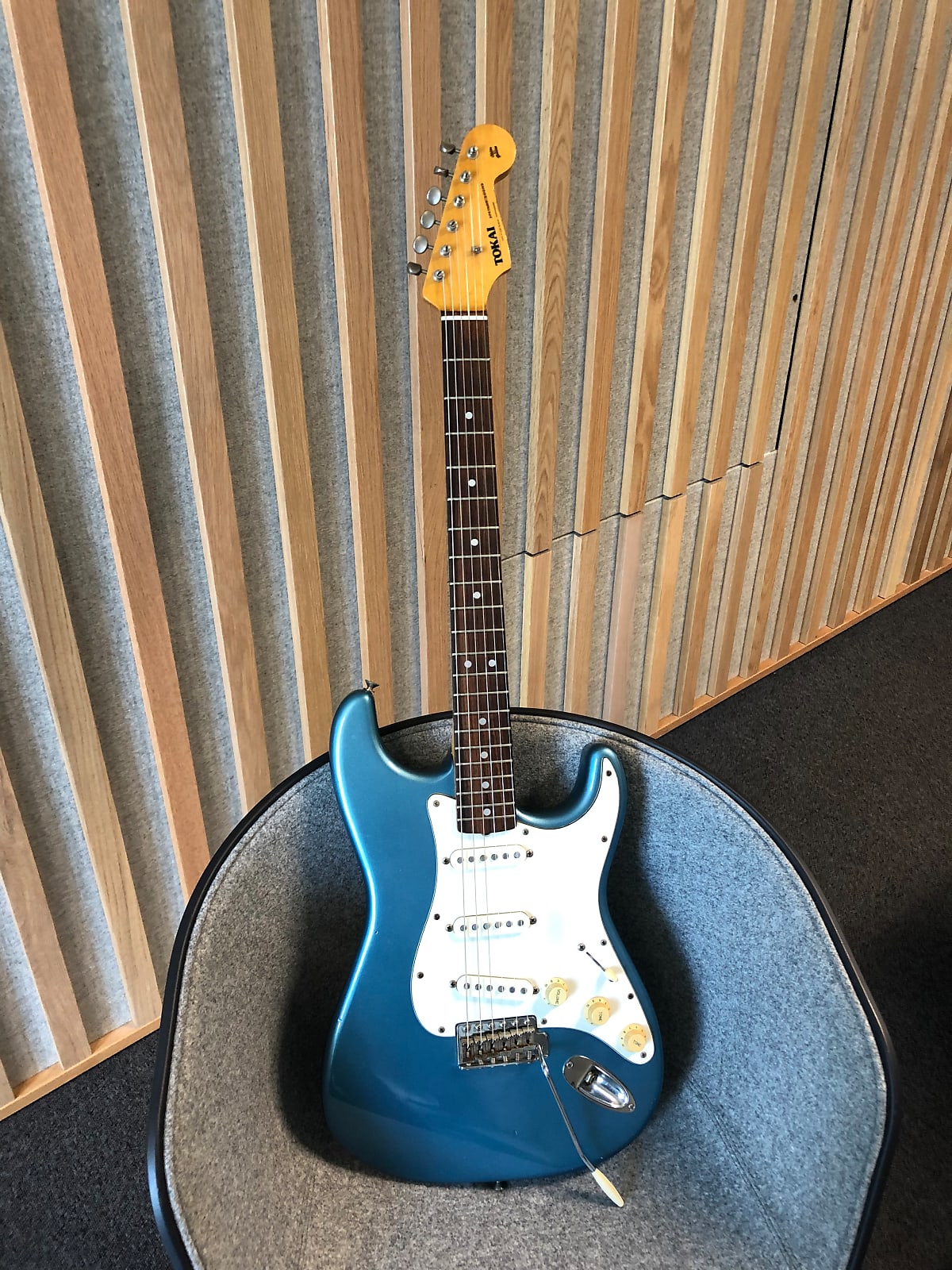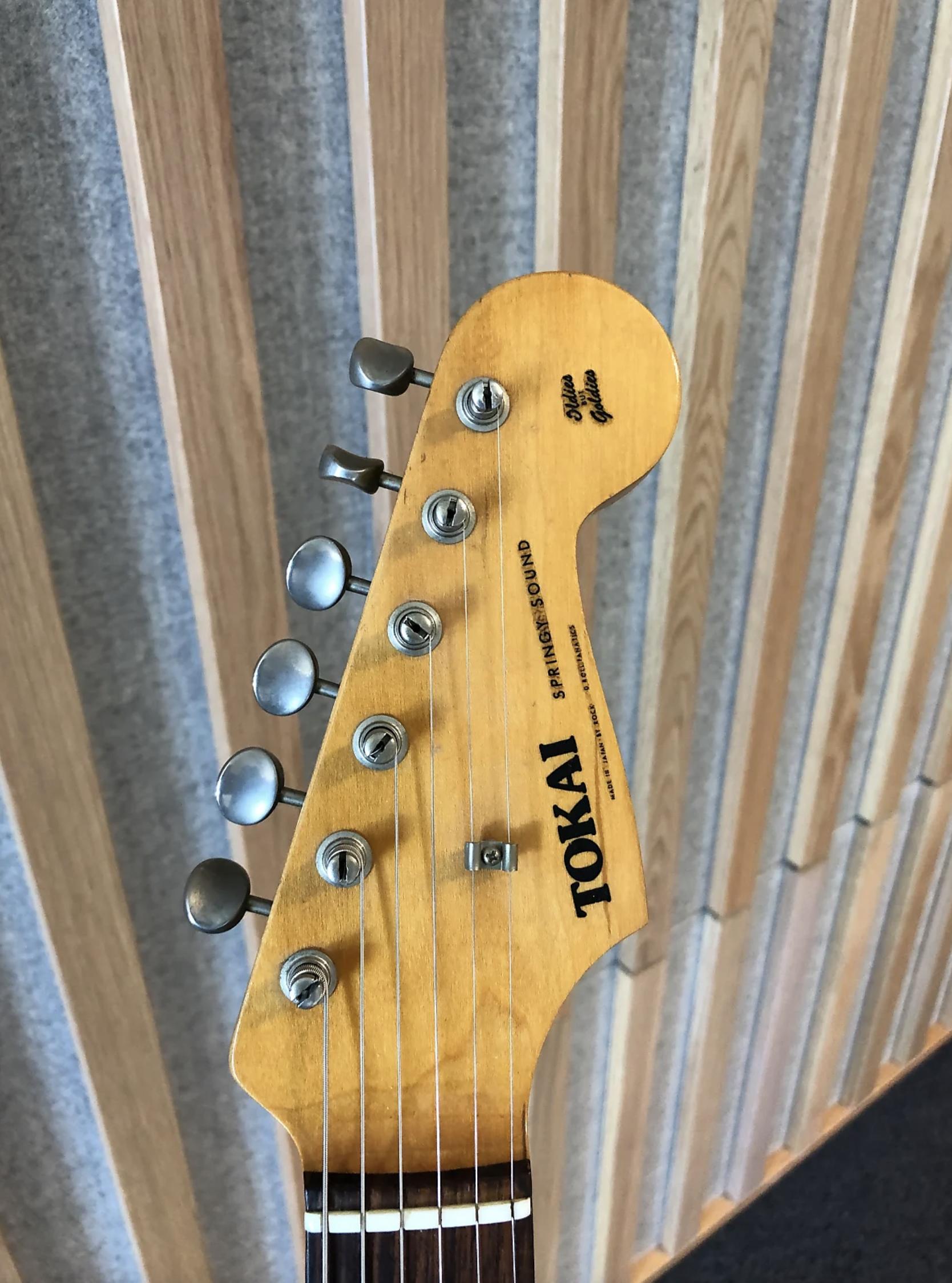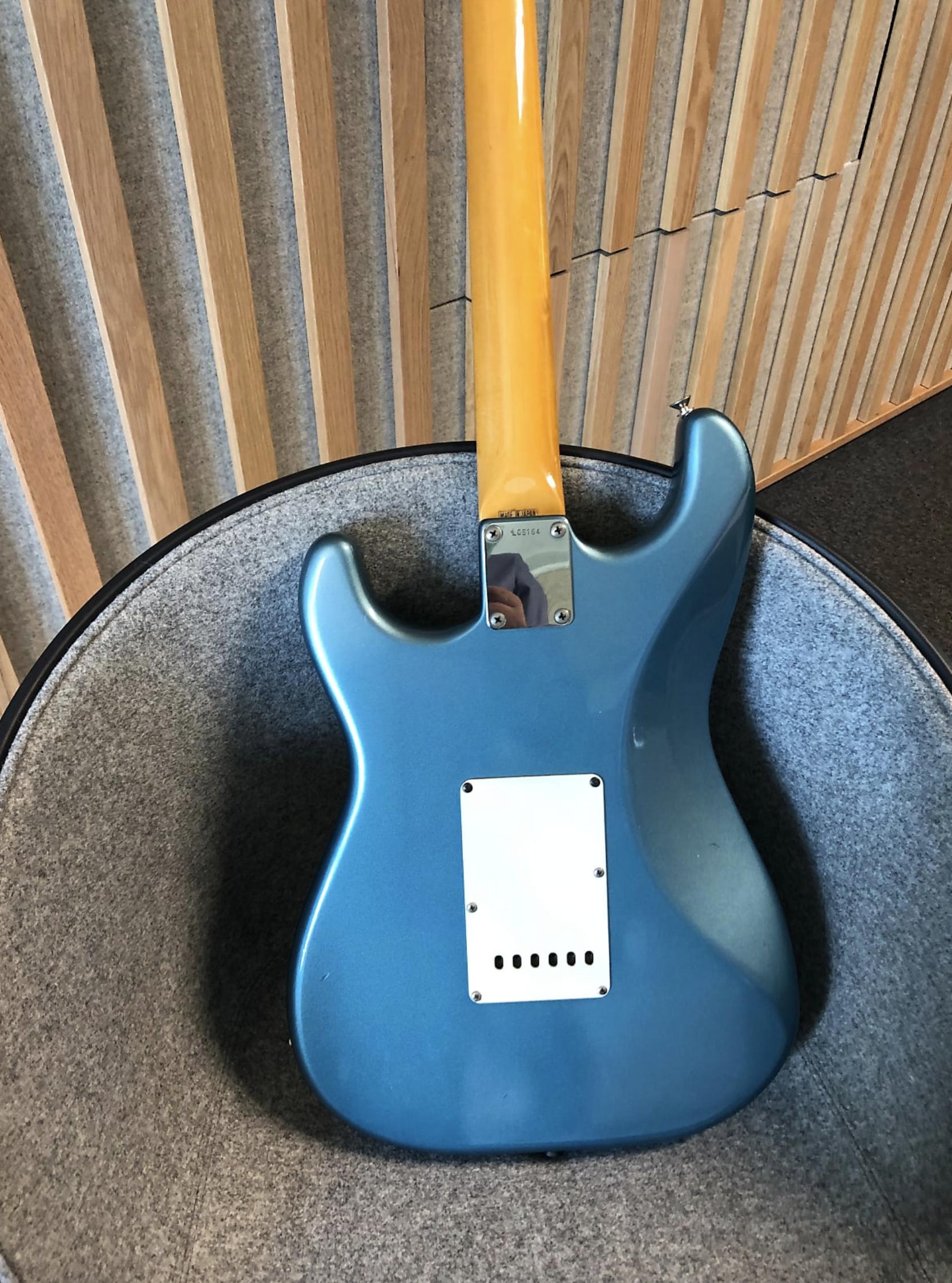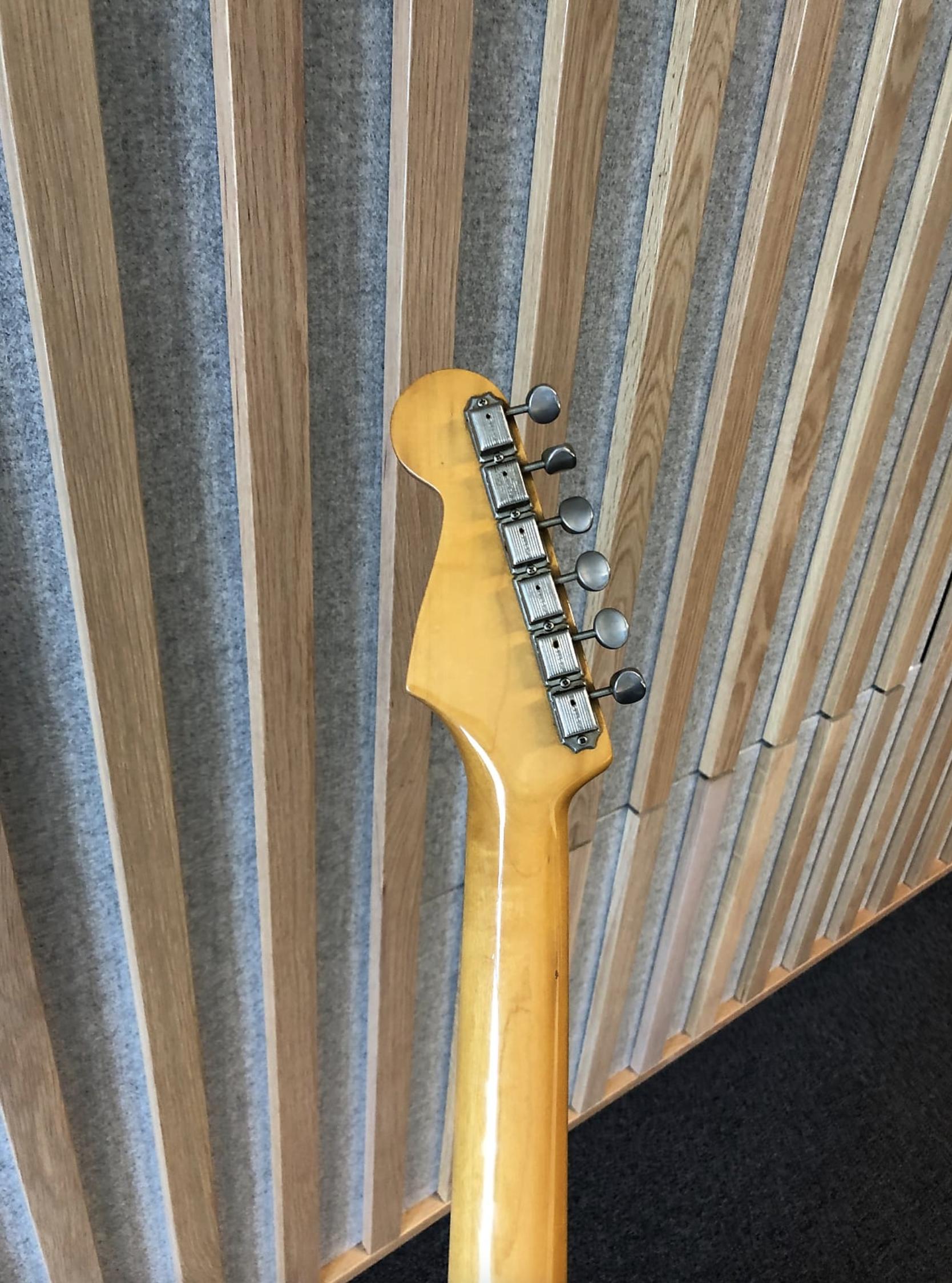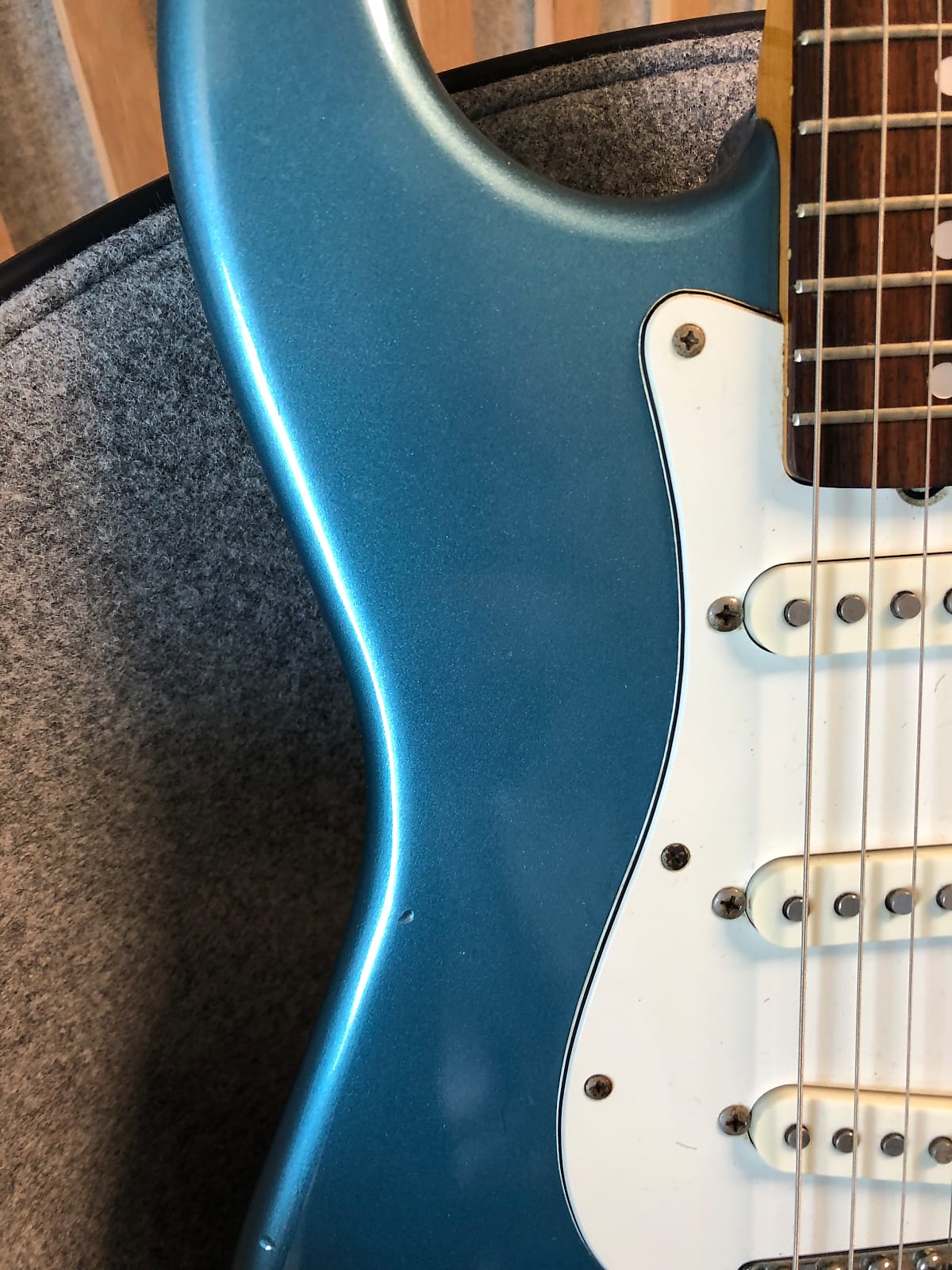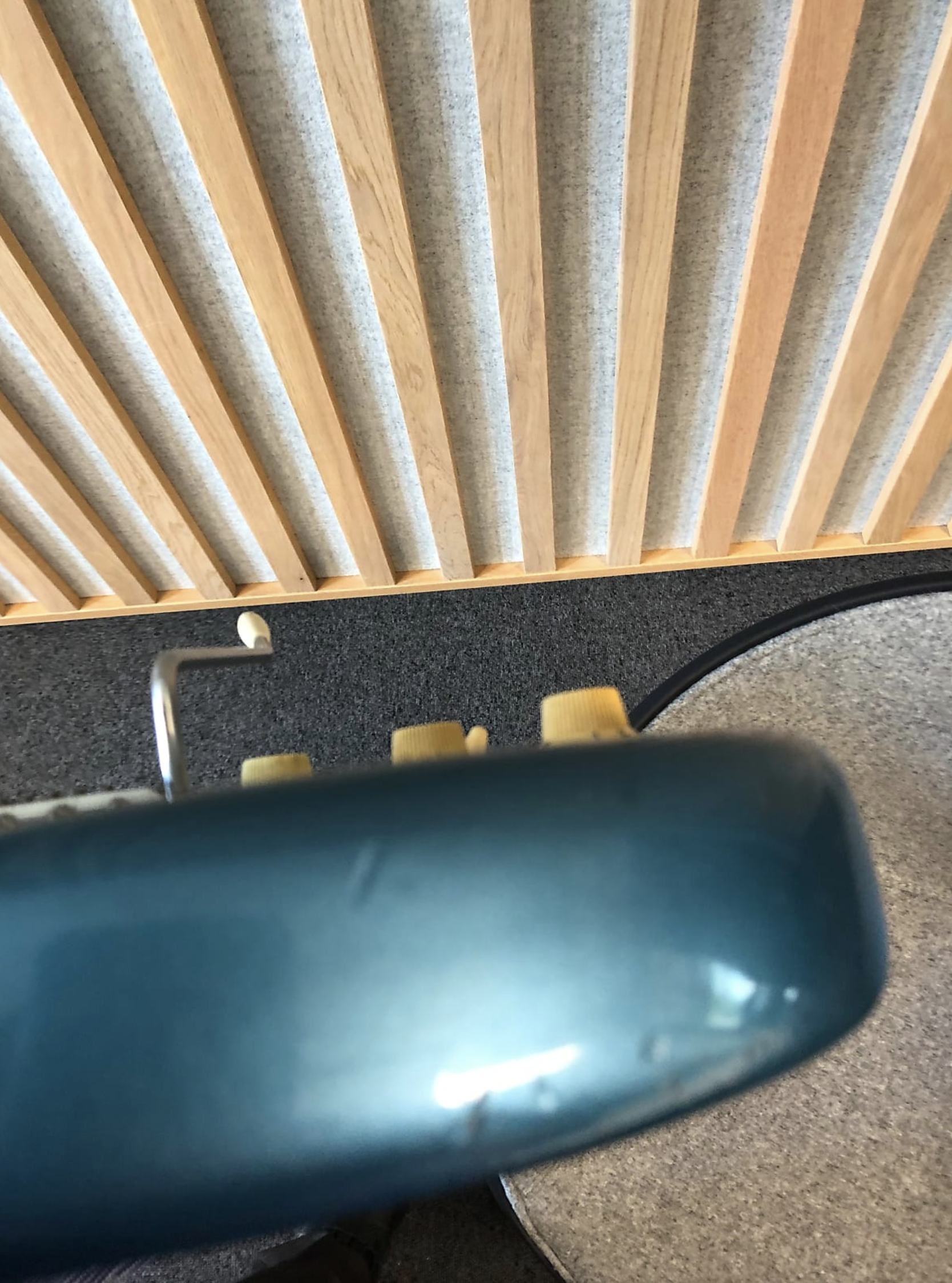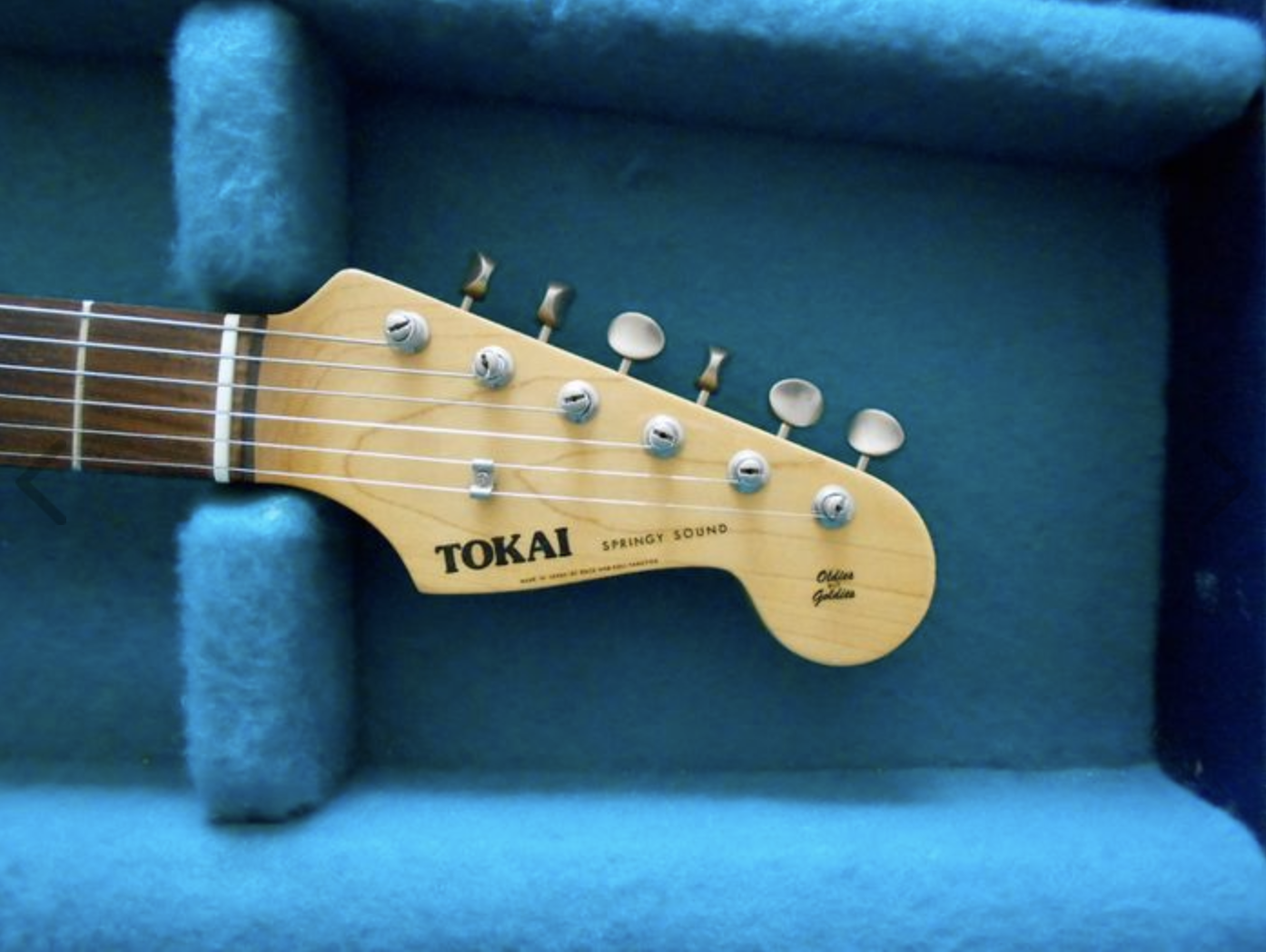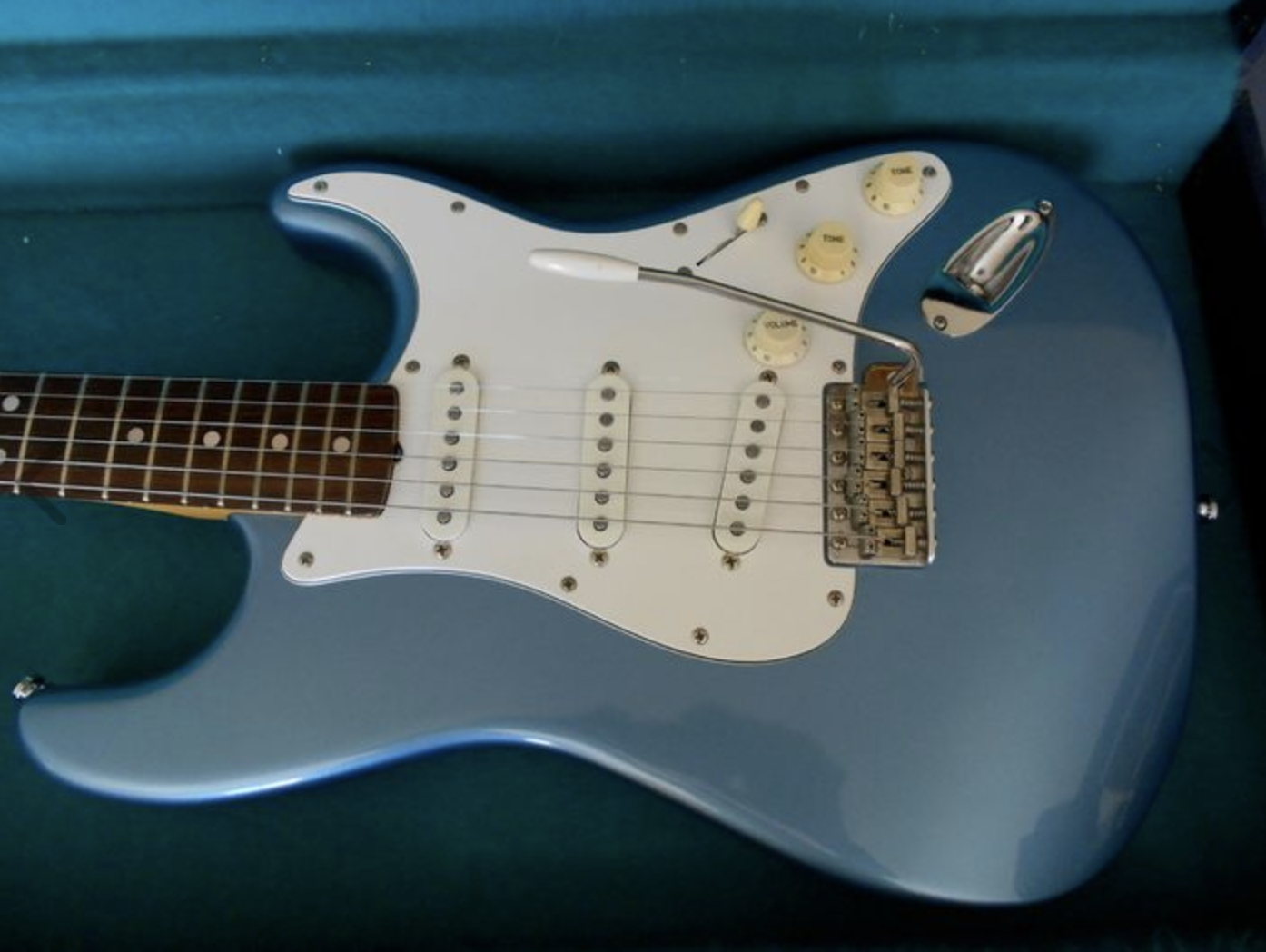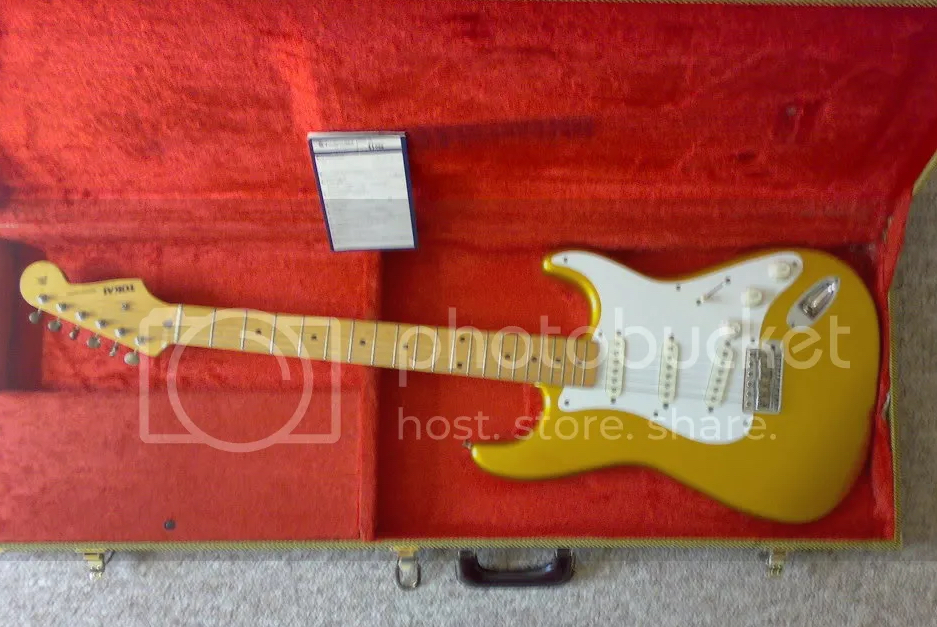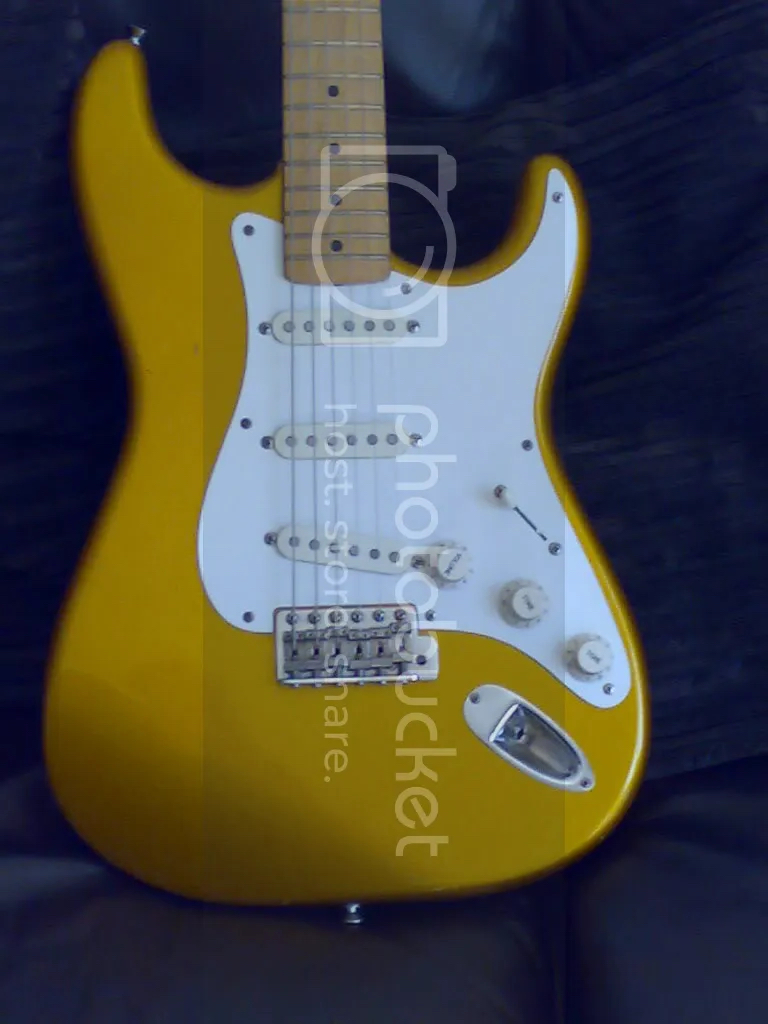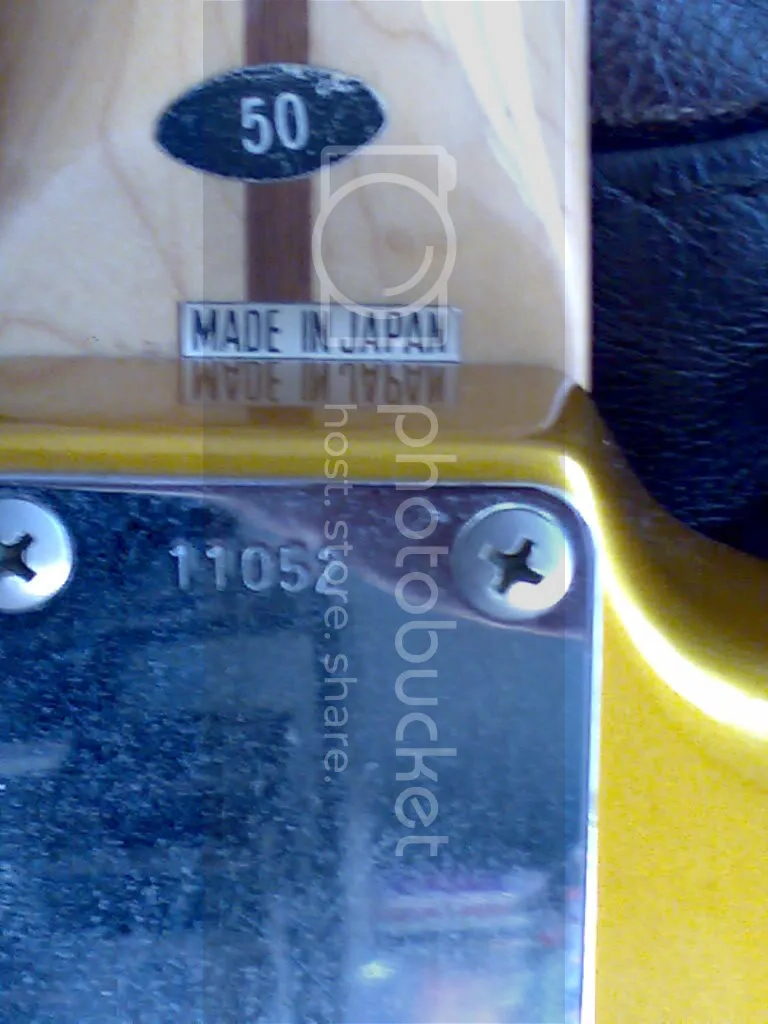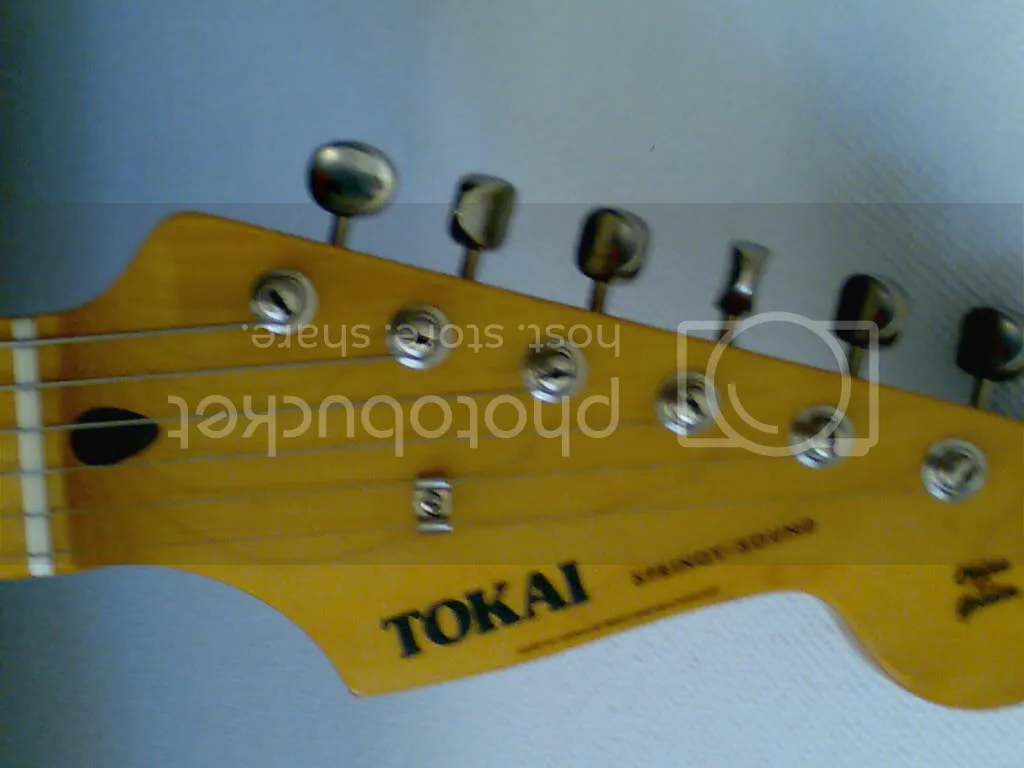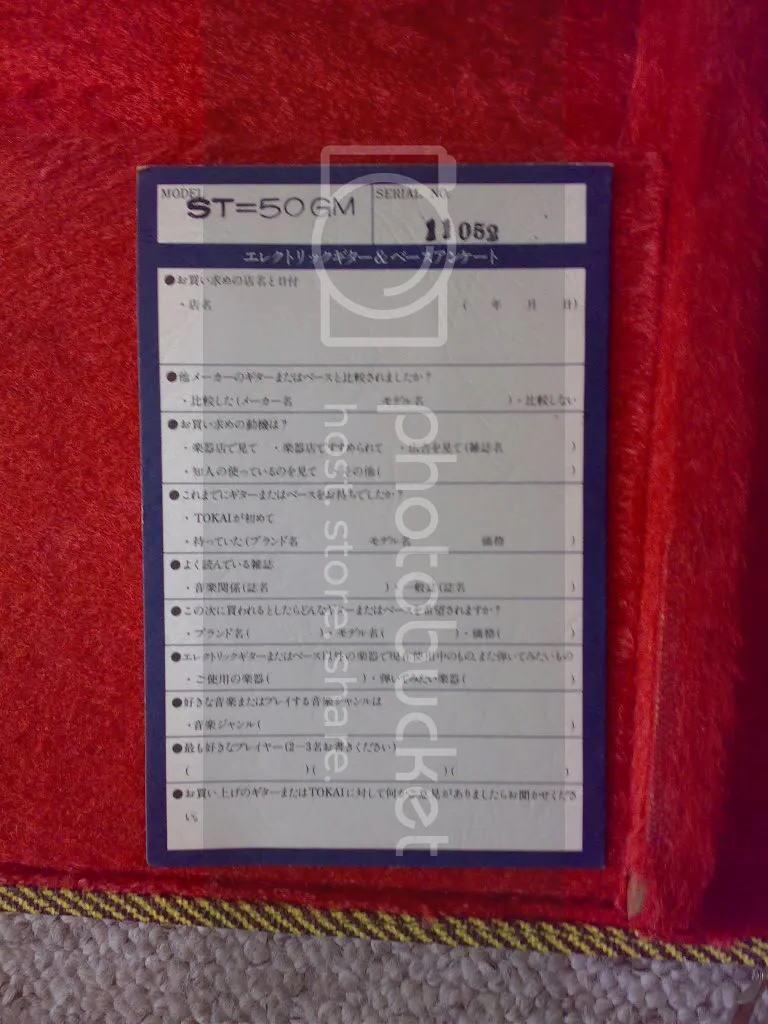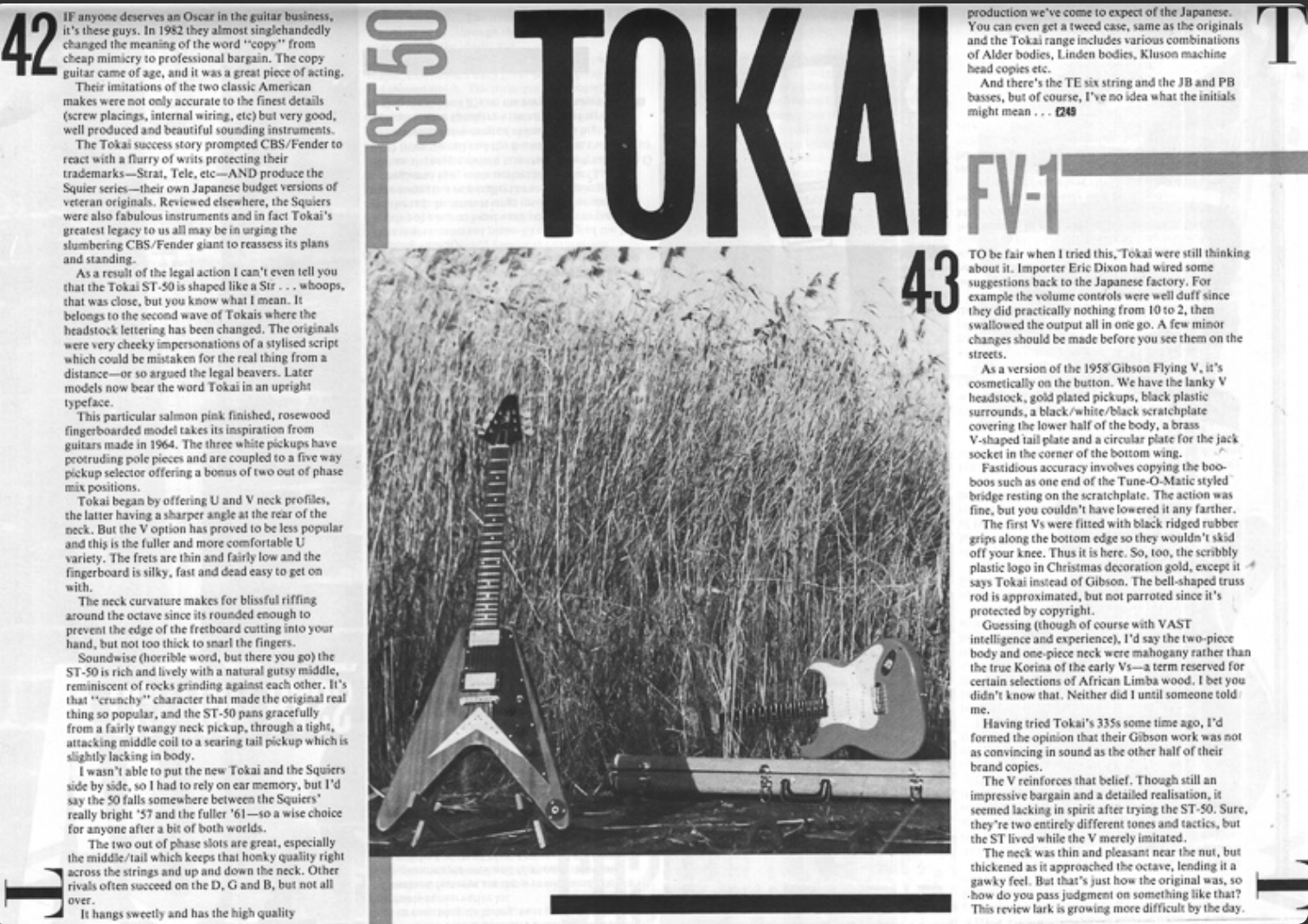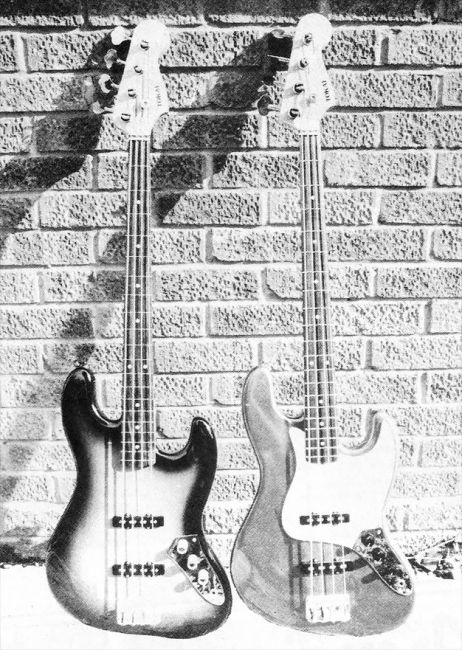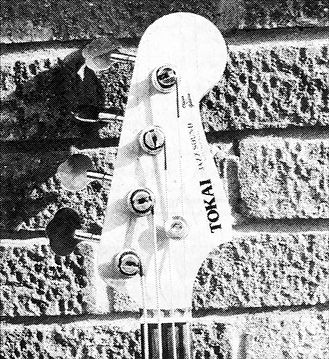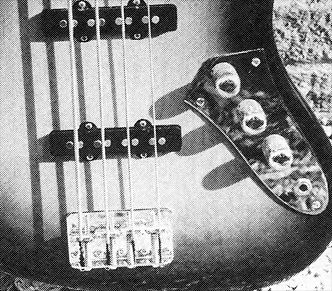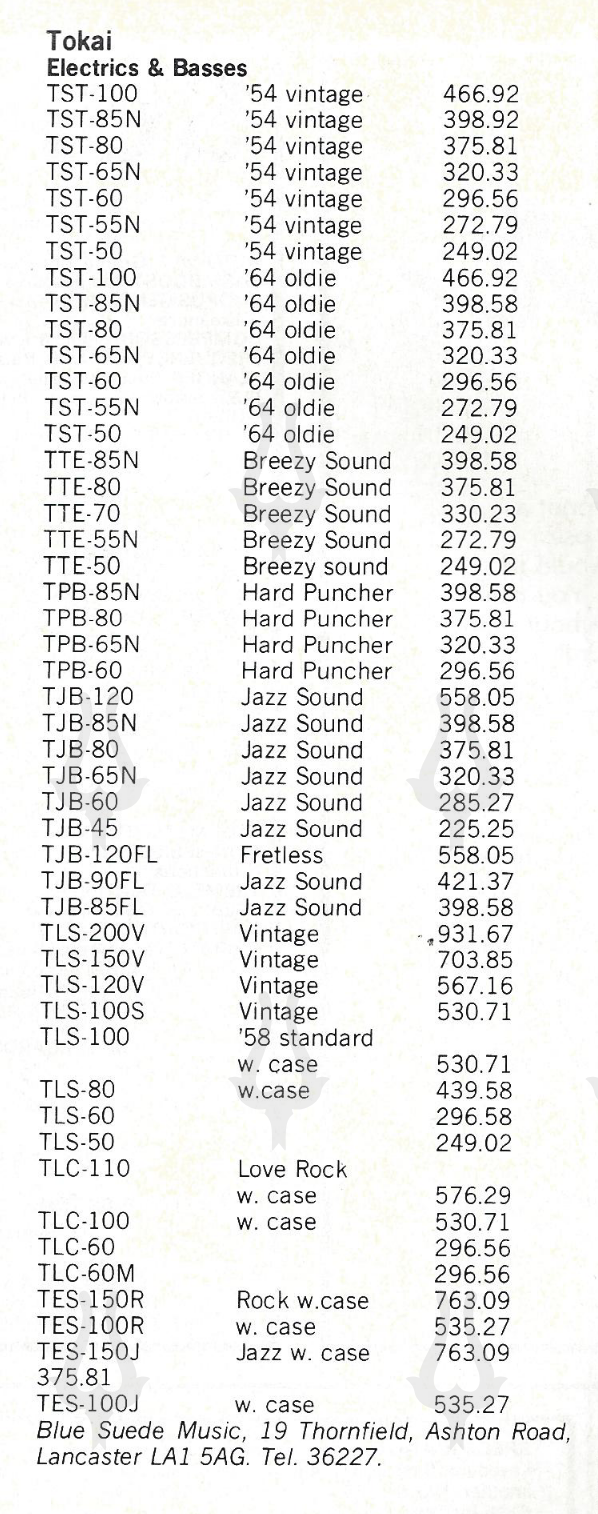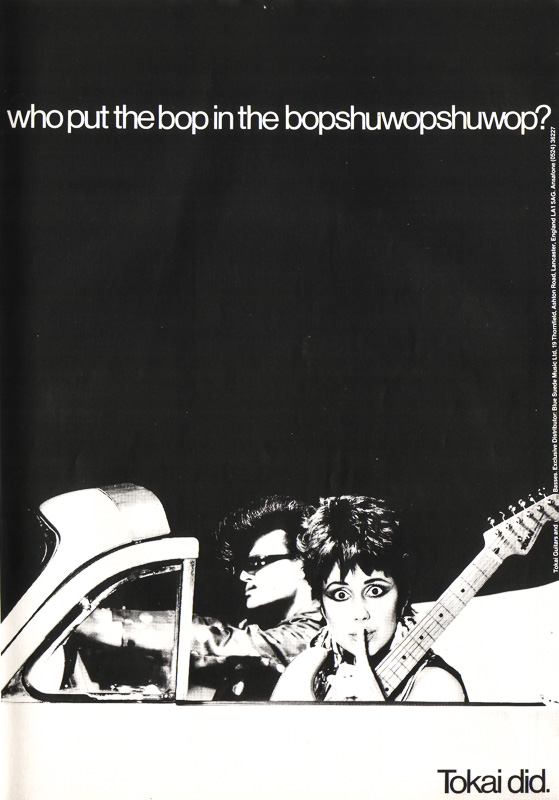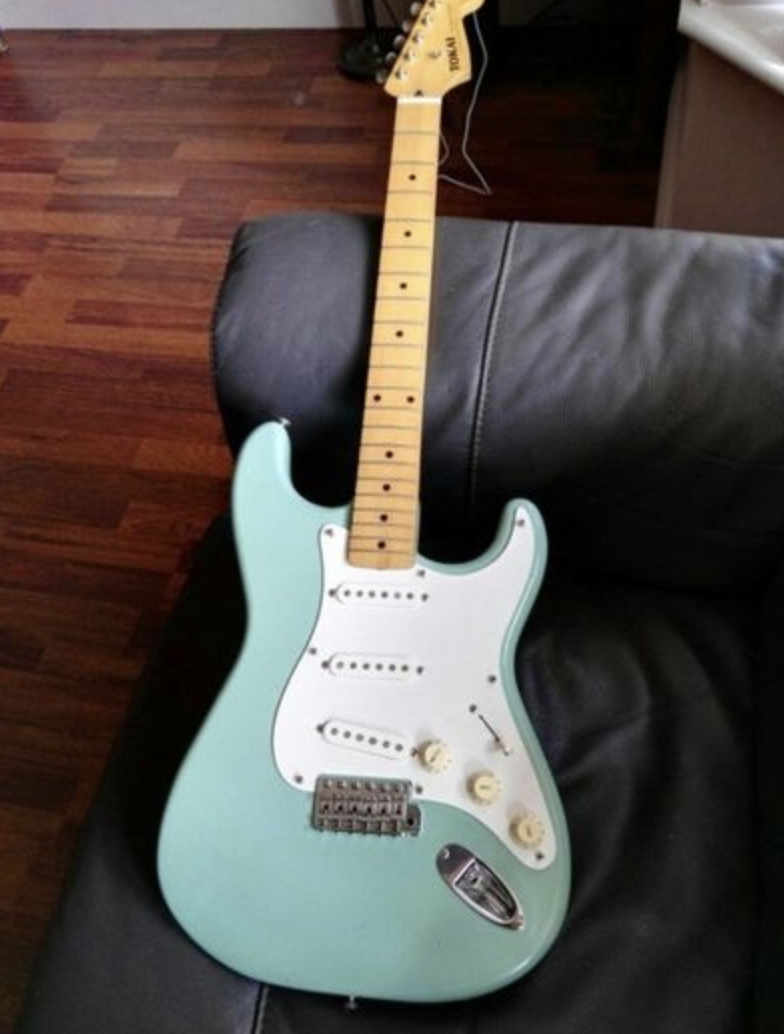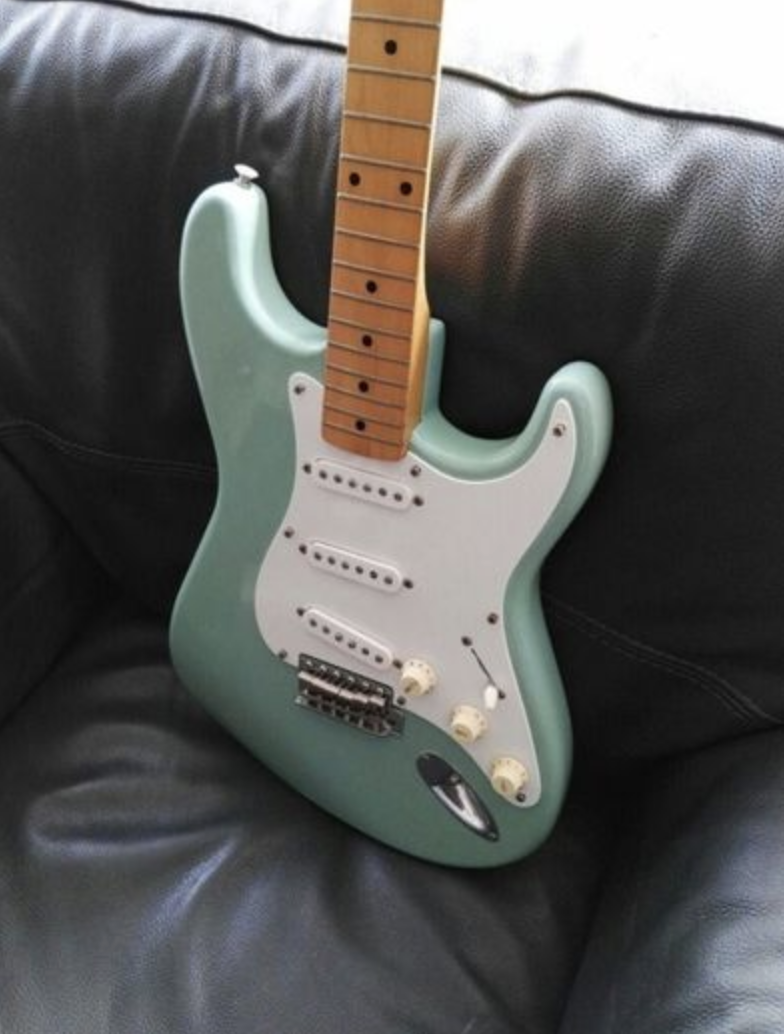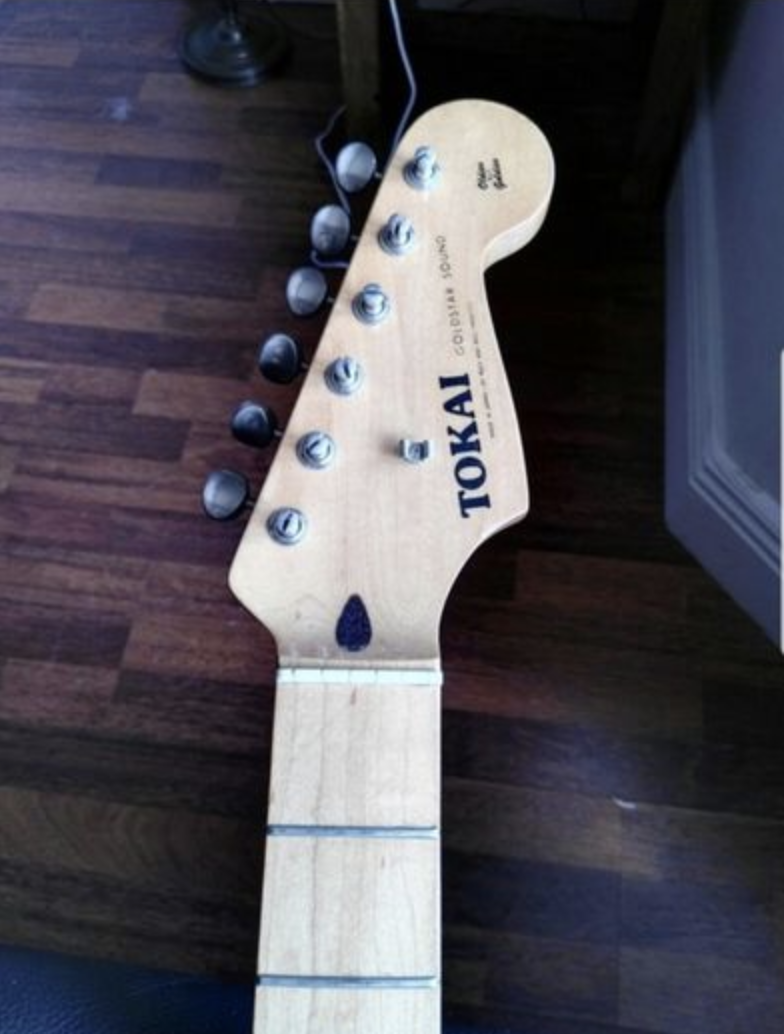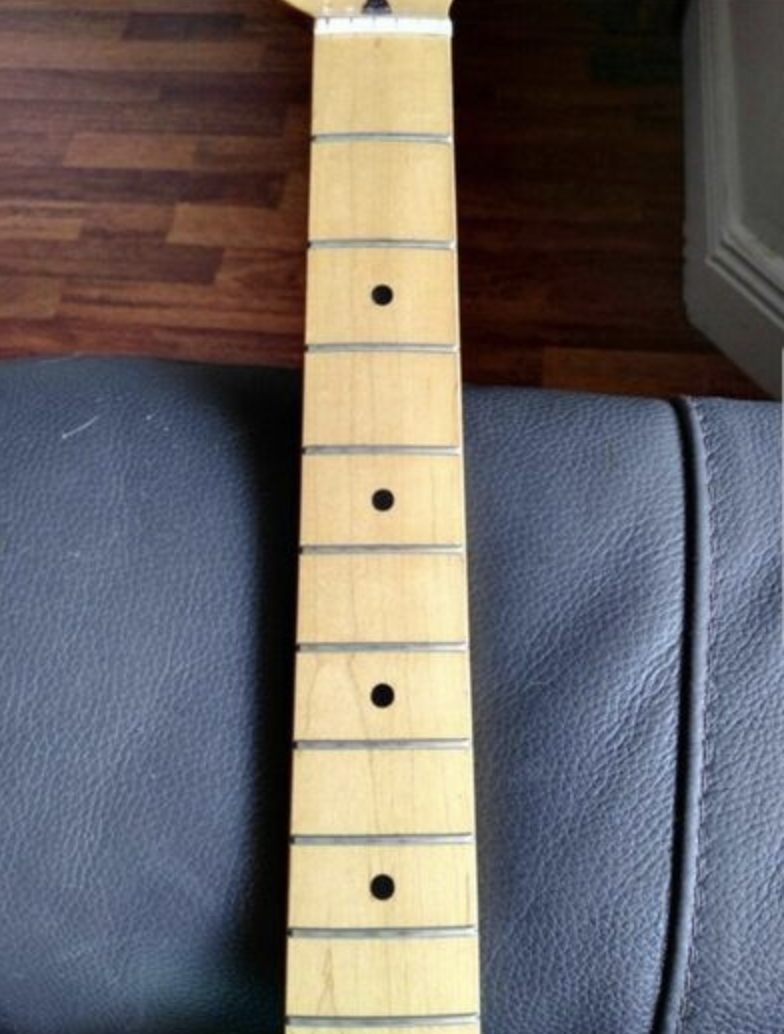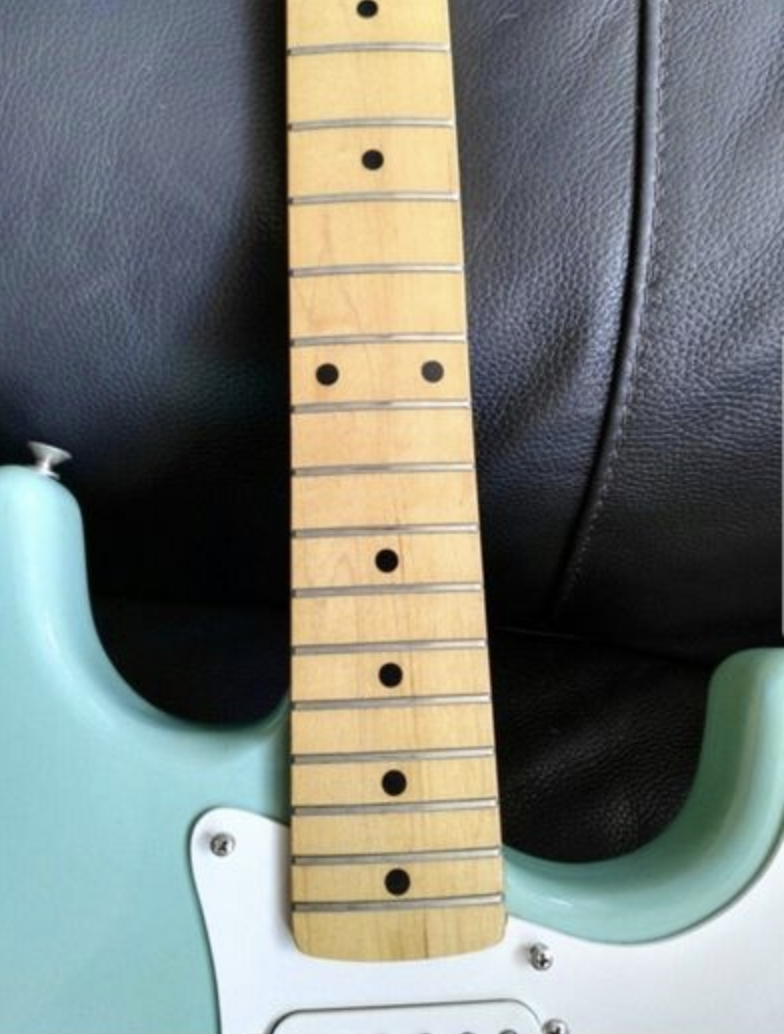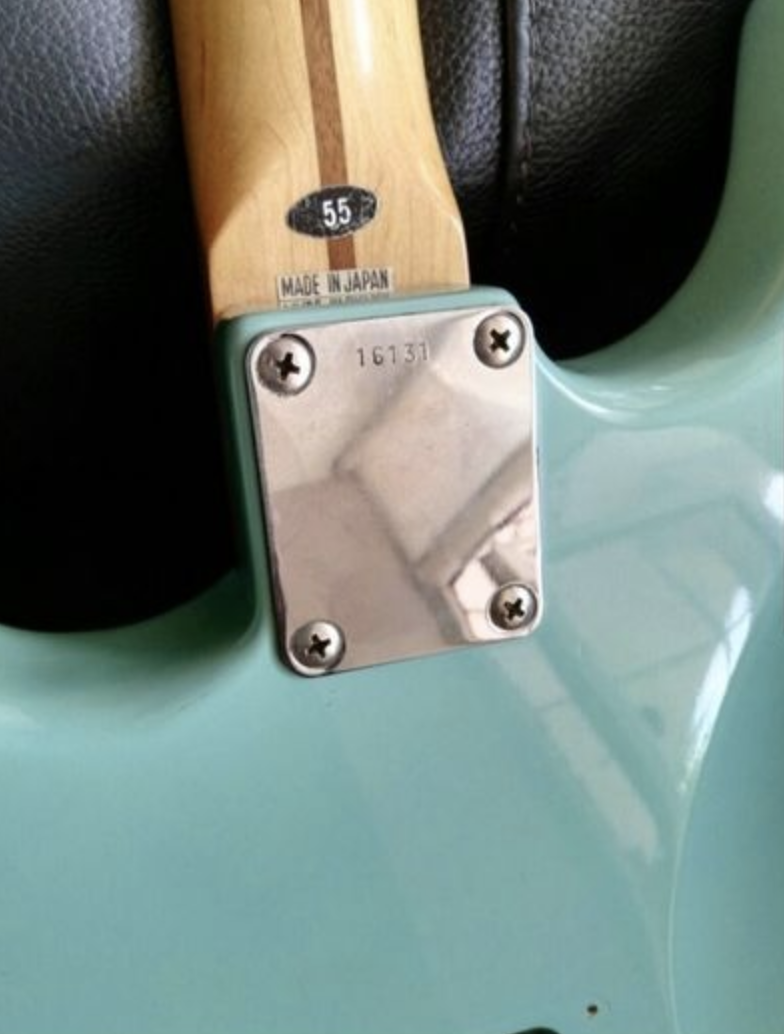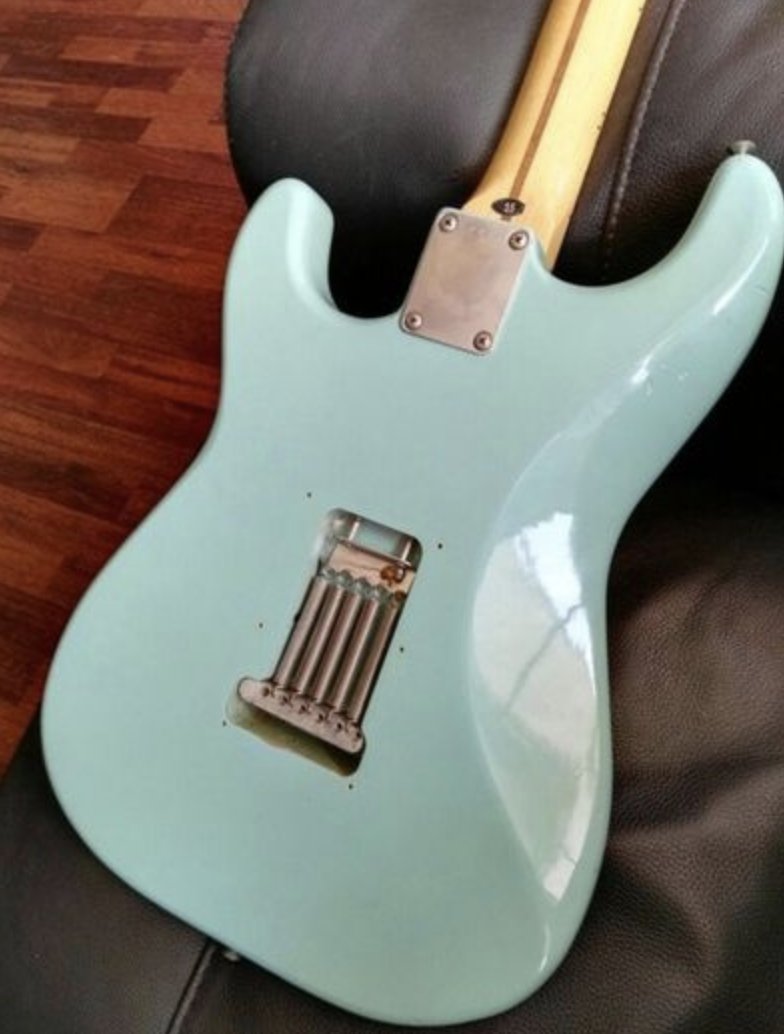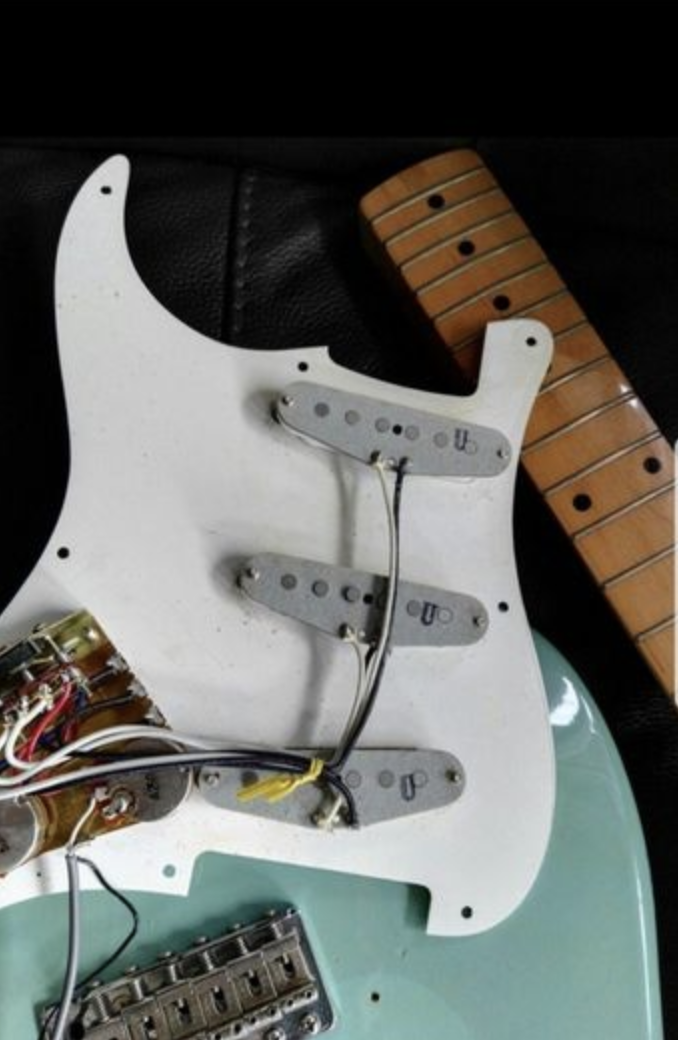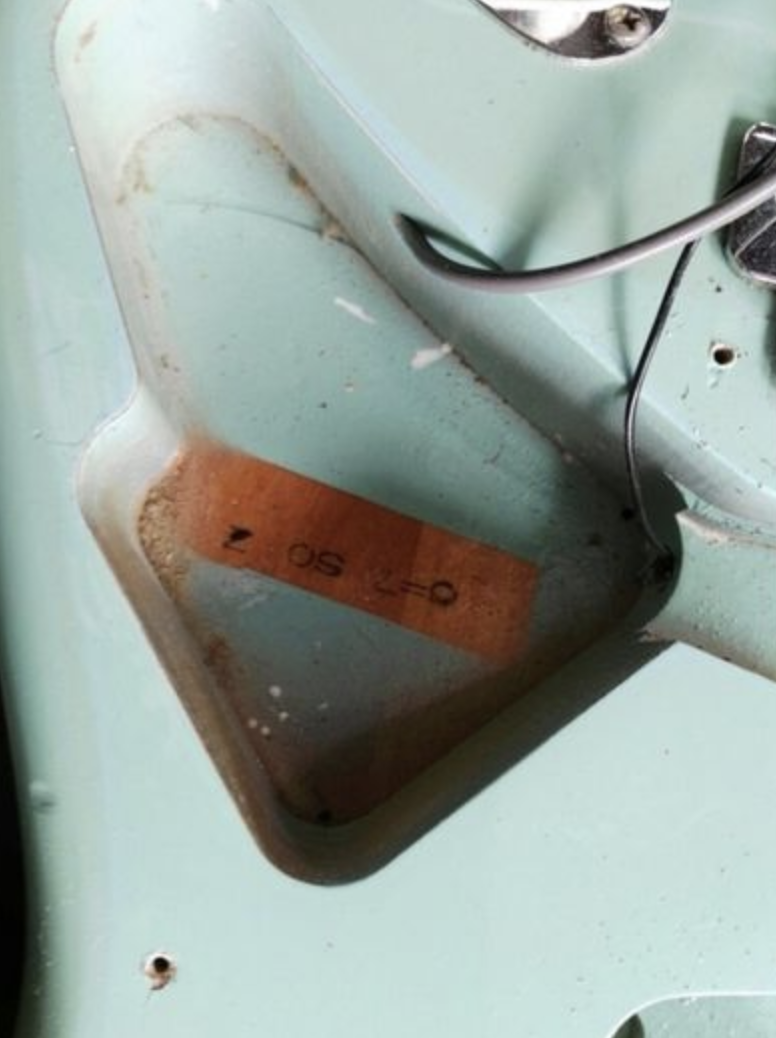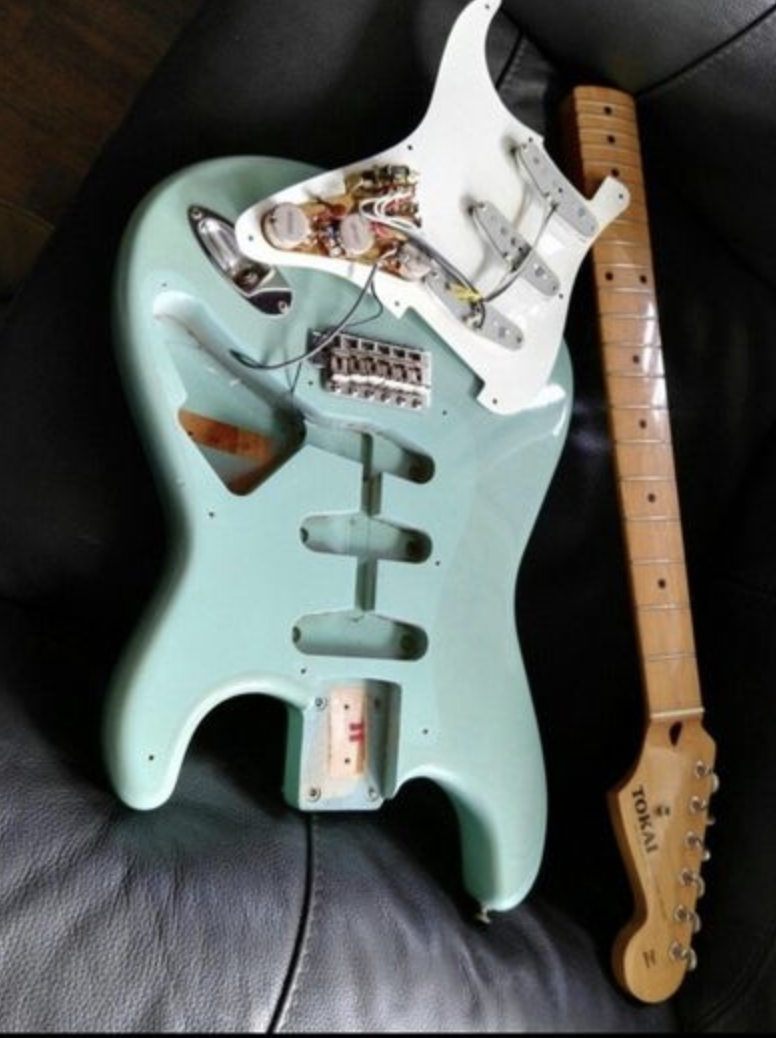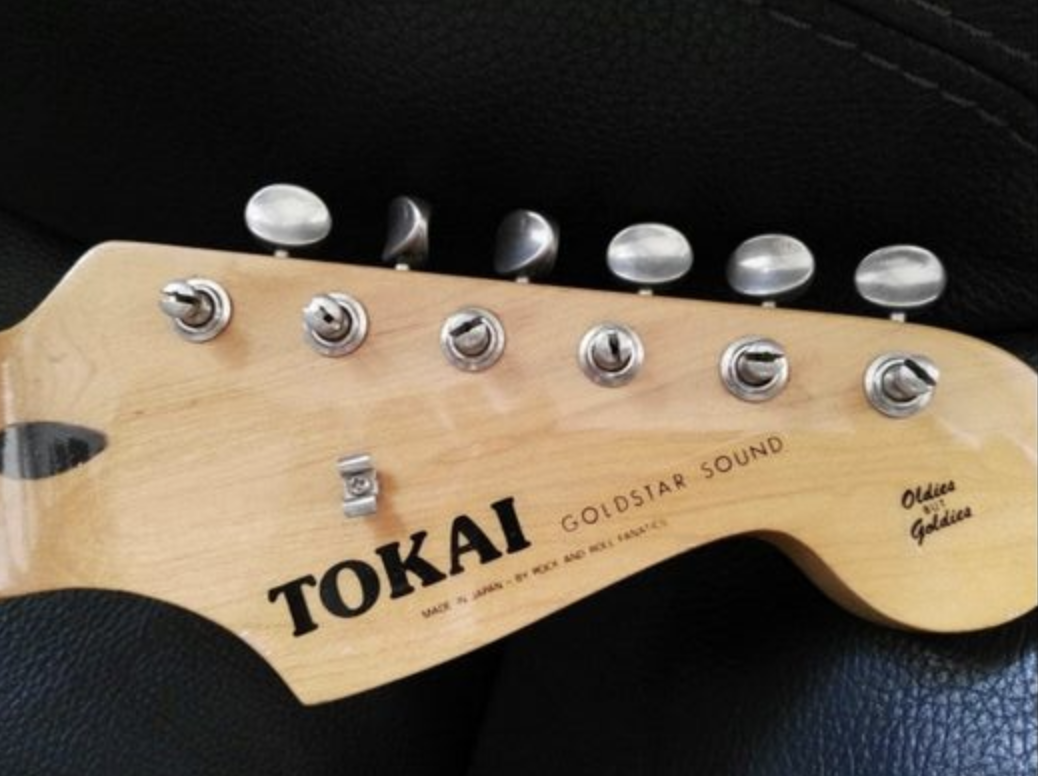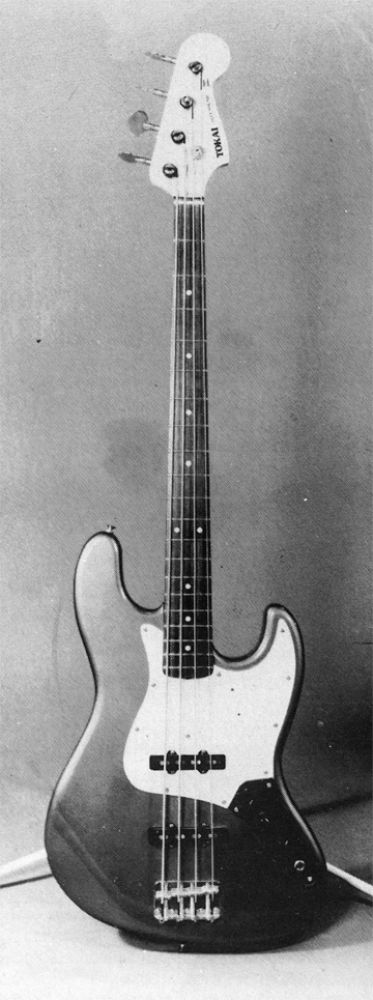 Tokai Basses (Electronics & Music Maker, Dec 1982)
Tokai Basses (Electronics & Music Maker, Dec 1982)
Tokai's factory in Hamamatsu, just down the road from that of Yamaha, has been turning out some fine guitars just lately, and if you're interested in electric stringed instruments it's unlikely that the name Tokai will have escaped your attention.
Perhaps one reason you'll have come across the name is that quite a few successful bassists and guitarists are using Tokais as stand-ins for their treasured American guitars. You can understand a musician being wary of taking that lovely '55 Strat out on the road where it will be subjected to the rigours of roadies, airlines and trucking companies, not to mention the rather more delicate but equally deadly fingers of the guitar thief.
Two players off the top of my head (a painless exercise, I assure you) whom I've recently met and are practising the Tokai stand-in routine are Jerry Harrison (Talking Heads) and Ron Wood (Stones). Sensible chaps, really - and it does indicate that Tokai must be getting close to the originals.
Here we reach the other area of excitement surrounding Tokai - they are rather good at (and we have to be oh so careful with the terminology here, it seems)
emulating, shall we say, the looks and sounds of these aforementioned American guitars. There we'll have to leave this fascinating topic for now, as a court hearing is set for October 1983 concerning all the ins and outs of just when a copy is not a copy.
Confused? You won't be when I tell you that the two bass guitars from Tokai that we're looking at this month are closely modelled on the Fender Jazz Bass - and what bass guitar maker is there in the world, and primarily in Tokai's homeland, who has not drawn massive inspiration from Fender's bass guitars? Whether it be the Precision, which first saw the end of a jack lead in 1951, or the Jazz Bass, unleashed in 1960, Fender, as the inventor of the damned thing, has naturally enough provided the pattern that most designers follow.
We've actually got two rather different models from Tokai's JB series to meddle with, and it would seem as well to start with the more straightforward of the two.
The JB45
Tokai headstock.
This is the JB45, although the head stock informs a little more with the news that this is part of the 'Jazz Sound Electric Bass' series, while what seems like a pointed afterthought next to it reads: 'Oldies But Goldies'. What is old about it is, as we've discussed, the inspiration of the design. Brand spanking new, however, is this bass guitar, and the finish on the body of this particular sample is a blinding metallic red which is, I suppose, quite attractive, although rather flashy for my taste. I like bold primaries, but you may love this Tokai.
This finish hides a body made from 'castor arabia'. This is evidently wood, and not occidental sugar. Just what kind of wood I don't know. Certainly the bass is not light in weight, so Tokai haven't just come up with an obscure name for balsa wood. More likely, this arabian stuff is probably from a family of hardwoods similar to that used for guitar bodies anyway - ash, alder, and so on.
The neck is of a comfortable cross-section, and looks as if it's maple. Back down on the body the finish is contrasted by a white plastic scratchplate, and further down sits a chrome plate on which is situated the three control knobs. All these design constituents will be familiar to anyone who's seen a Jazz Bass (that presumably includes you all), and indeed the controls on the JB45 work in the traditional Jazz Bass manner: the front two, slightly larger black plastic 'radio' knobs with a white line marker on top, control the individual volume of the two pickups, while the rear knob, a slightly smaller and higher-mounted version of the volumes, controls overall tone.
To me, the stark white of the scratch-plate and the harsh chromes of the bridge and control plate look a bit cheap compared to the rest of the bass, but this is only a personal quibble. The two pickups are apparently 'JB Super' types - two polepiece per string Jazz-like 'Strip' pickups, you'll be surprised to hear. The sound is good and full from these, and the controls enable you to wrest a reasonable racket from the thing: the tone control isn't spectacularly effective, but then we can't all be active, can we? It does its job.
The bridge on the JB45 is not large, and while its overall mass would not make you inclined to describe it as 'chunky', it didn't actually pose any problems while on review. It gives the sort of adjustments you'd expect from a bass like this: four individual saddles, each adjustable at either side for saddle (i.e. action) height, and a cross-head bolt passing through from the back of the bridge for intonation setting. The saddles themselves are ridged, which allows for more stable minor adjustments to string spacing - which of course is fairly generous on Jazz Bass-type instruments of this sort.
The truss rod adjuster is of the cross-head-at-body-end type, and wasn't tested. Playing the thing is fine. As I've said, the neck is agreeably narrow, although the strongly tapered line of the neck (down to about 1½in at the nut) may unsettle you initially if you're more used to Precision-type necks. You'll soon get over it.
The fingerboard itself looked like rosewood, and with the action set as supplied the only noticeable buzz was at the Ab on the A-string. Machines are standard-looking models all of which worked accurately and reliably while on test. One slightly unusual item up at the headstock was what I can only assume is a strap-button, on the back of the head, roughly between and below the E and A machine heads. You can affix a strap here if you want, though it'll have to be longer than average. I prefer to use the usual button on the top horn, and with that hooked up it felt well balanced once on.
The JB85FL
The other Tokai for review this month is the JB85FL, a slightly better-looking version than the 45, and using more expensive materials here and there. But it's essentially much the same in looks and feel. This one is a fretless version, hence the FL suffix (it does not, of course, stand for Fender's Lament).
The Tokai's neck is maple, again with that good old narrow cross-section similar to that of the 45. The fretless fingerboard is rosewood, and has fret markings applied as reasonably neat inlays, slightly darker in colour than the dot inlays nearby.
The hardware is very similar to that of the 45 in physical make-up and arrangement, although there is of course no scratch-plate (to show off the sunburst), and the colour of the metal plating used for the control plate, knobs and bridge is of a rather less offensively cheap-looking chrome than its (admittedly) cheaper compatriot. Also, the pickups are apparently 'JB Vintage' types, and the machines are more allied to Kluson's design and are actually reverse-gear mechanisms.
Jazz Bass controls.
I must say I found this really annoying, and kept sharpening when I wanted to flatten, and vice versa. I realise this is down to being so used to normal types where you turn the machines away from you to tighten the string and towards you to loosen. Doesn't this seem logical? Anyway, the 85 most definitely has reverse-gear machines, so owners will just have to get used to them. They still do their job well, of course, it's just a matter of being confronted with a change in something you rarely actually think about. Nonetheless, one is still forced to ask; why reverse-gears?
The control knobs are domed metal types, and while these add to the good looks of the 85, they don't actually have any marker, save the rather invisible grub screw holding the knob to the shaft (a painless exercise, I assure you). The bass plays very smoothly and warmly, with all the curious inflections of the fretless type, and indeed the Jazz-type control set-up does seem to suit the fretless sound very much. The 'Vintage' pickups sound like they chuck out a little more treble than their counterparts on the 45.
Conclusions
A slightly tricky area occurs when we try to talk prices - a fundamental requirement, I'm sure you'll agree. Eric Dixon from Tokai's UK distributor, Blue Suede Music of Lancaster, tells me that the JB45 'will not be advertised at less than £195', and that the JB85FL will not appear in ads for under £295. But he encourages you to haggle with your friendly local Tokai dealer, and suggests that you may well be able to pick them up cheaper than these advertised prices. It's up to you, it seems.
Assuming that you're keen on the Jazz-type style of bass in the first place, I reckon the JB45 would be a good choice in that it's electronically sound and, I would guess from the review period, constructionally sound, too. On an aesthetic note, you'll want to check out the colour options (Mr Dixon says they'll come in almost any colour you want).
The JB85FL is a pleasing fretless with character, and if you can stand a little haggling you could well land yourself a bargain.
Tokai Basses are distributed in the UK by Blue Suede Music, (19, Thornfieid, Ashton Road, Lancaster. Tel. 0524 36227).




